Experience the Extreme Beauty of Manali
Travel options are numerous. They are for people who are looking for novel feelings and experiences. The temples are full of devotional songs as part of the adventure sports, and a Manali tour offers a truly heavenly travel experience while taking in the entrancing beauty of nature. Manali, a popular honeymoon destination, offers a variety of activities for kids and adventure seekers. The places to see in Manali will never let you down, whether you’re seeking some inner peace or want to go on an adventurous backpacking trip. On the banks of the River Beas, Manali is a treasure trove of natural, cultural, and adventure attractions. There are many tourist attractions in Manali, including the stunning Solang Valley and the Great Himalayan National Park. Many of them, including Manu Temple and Mall Road, have developed a reputation among many families and children as exciting excursions. Although these are Manali’s main tourist destinations, you shouldn’t overlook less well-known locales like Kasol and Kullu. These locations provide the most beautiful scenery, with stunning mountains and emerald valleys. You can see a little hippie culture here. This TripFinder article will assist you in improving your ideal Manali tour.
Hadimba Temple
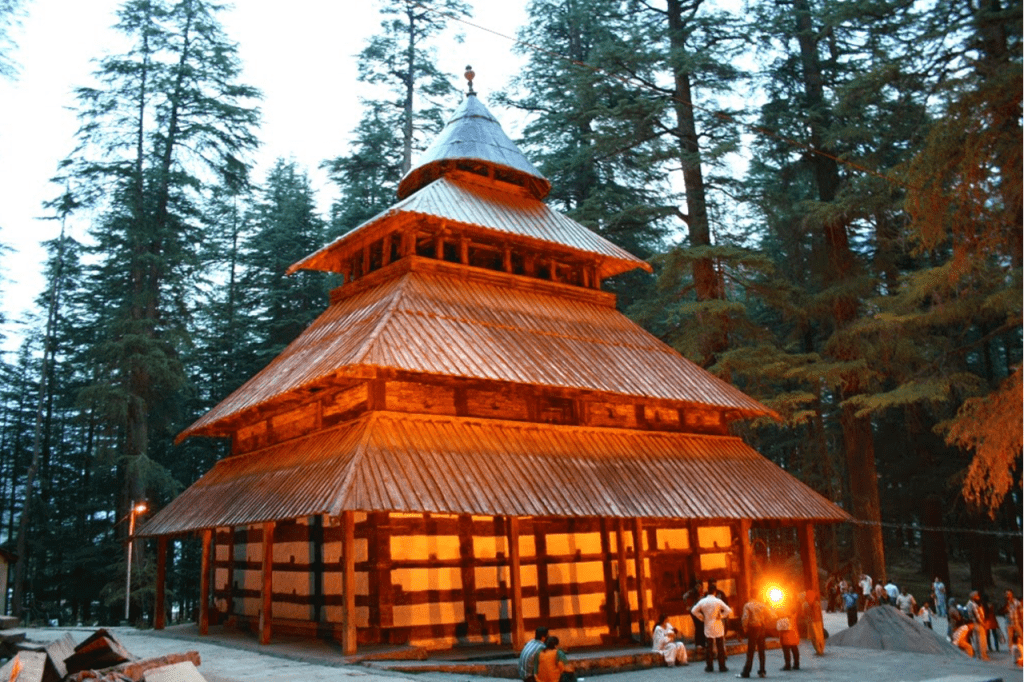
This historic temple, also called the Hidimba Devi Temple and the Dhungari Temple, was erected by Maharaja Bahadur Singh back in 1553. As suggested by its name, the temple is devoted to Hidimba Devi, Bheema’s wife. The shrine’s wooden construction sets it apart from the majority of Hindu temples in the nation. Within the grounds is another shrine dedicated to Ghatotkacha, the son of Hidimba Devi. One of the best places to visit in Manali is the temple, which is surrounded by dense cedar groves and has snow-capped mountains in the background. This is the must-see place on your Manali tour.
Location: Hadimba Temple Road., Old Manali, Himachal Pradesh- 175131
Distance from Manali Bus Stand: 3.5 km.
Best time to visit: after the monsoon season (mid-September) or during the pleasant summer months of March–June.
Entry Fee: No entry fee.
Solang Valley
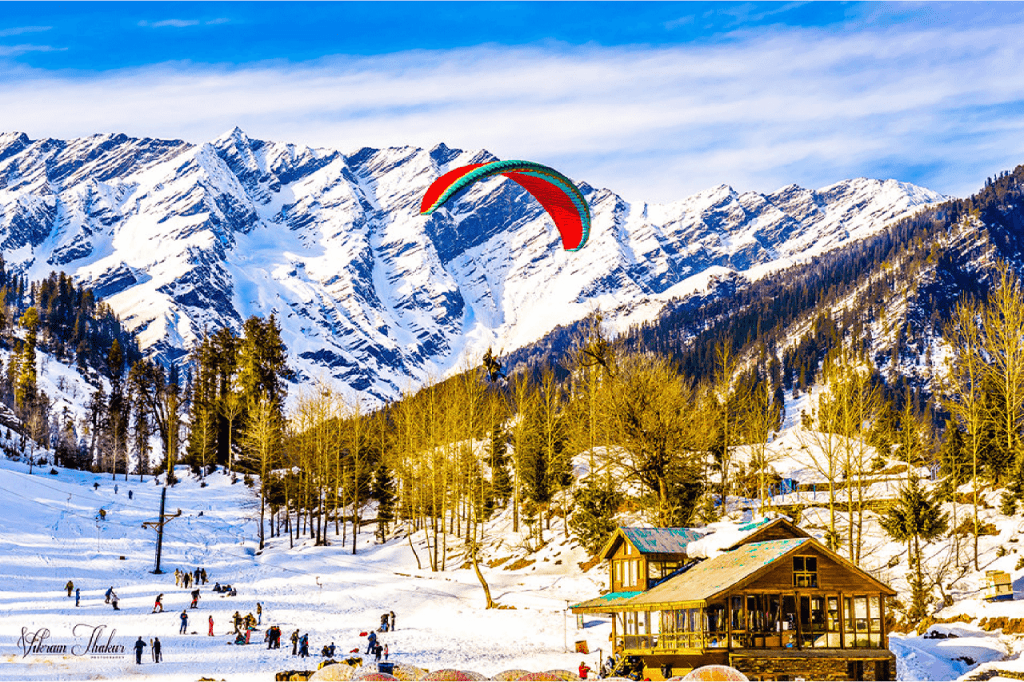
13 kilometres from Manali, Solang Valley is hidden between the Beas Kund and Solang Village.Ski enthusiasts from all over the world flock to the valley to take in the breathtaking views of the snow-covered mountains and magnificent glaciers that it has to offer. Many people travel to Solang Valley every year just to take in its pristine, snow-white magnificence because of its unmatched beauty. Solang is undoubtedly at its most beautiful in the winter, with groves of emerald green trees dotting the pristine white landscape, clear blue skies, and magnificent mountains in every direction. People travel to Solang Valley not only to take in its breathtaking beauty but also to participate in a variety of winter sports and activities. The pure, driven snow here is perfect for skiing, and when the winters are milder, you can also try zorbing and paragliding.
It is impossible to describe the views of the area from the open sky as you paraglide through the valley; they must be seen to be believed. Try camping here, amidst the valley’s verdant green meadows, if you really want to experience its unspoiled beauty. In Solang Valley, you can also try out other extreme sports like quad biking and snowmobiling. There is the Solang Ropeway, a cutting-edge cabin with panoramic views of the valley, for those who are true thrill-seekers. However, there are a number of locations you can visit if you’re travelling with family. The Great Himalayan National Park, Rohtang Pass, and Kothi are all top-notch tourist attractions. Whether you travel to Solang Valley alone or with friends and family, there is a lot to learn and enjoy. It will be a great memory of your Manali tour.
Location: between Solang Village and Beas Kund, Manali, Himachal Pradesh, India
Height: 2560 metres (8400 feet) above sea level
Solang Valley Snowfall Time: Mild snowfall has been seen in the valley since the beginning of October. As the winter months progress, the snow levels increase from November to January.
Distance from Nearest Airport: The nearest airport near Solang is Bhuntar, which is located 63 km away from the valley.
Jogini Waterfalls
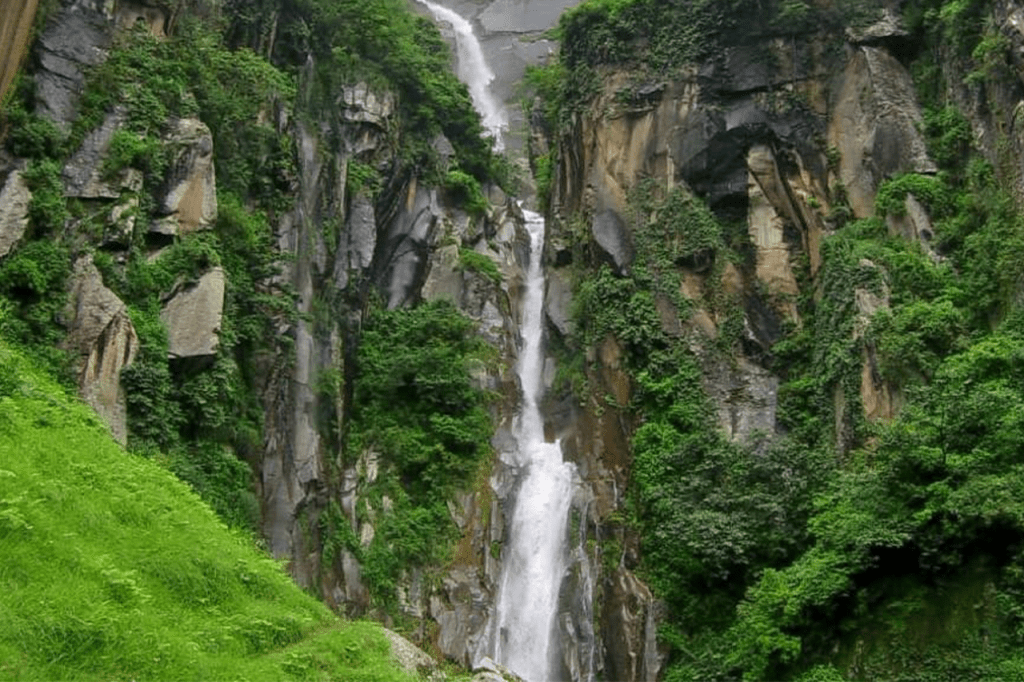
A quick and energising hike will take you to the thundering Jogini Falls from Manali’s main town. You can see the River Beas and the Rohtang’s snow-capped peaks from the waterfall’s trail, which is beautiful. In addition to its tranquil environment, Jogini is a significant site for pilgrimage, and you can explore many ancient shrines near the pool at the bottom. One of the best hiking and picnicking locations in Manali, this picturesque natural area is best enjoyed with plenty of time to spare.
Location: Vashisht Village
Best time to visit: After the monsoons (mid-September) or the pleasant summer months of March-June
Entry Fee: No entry fee.
The Manu Temple
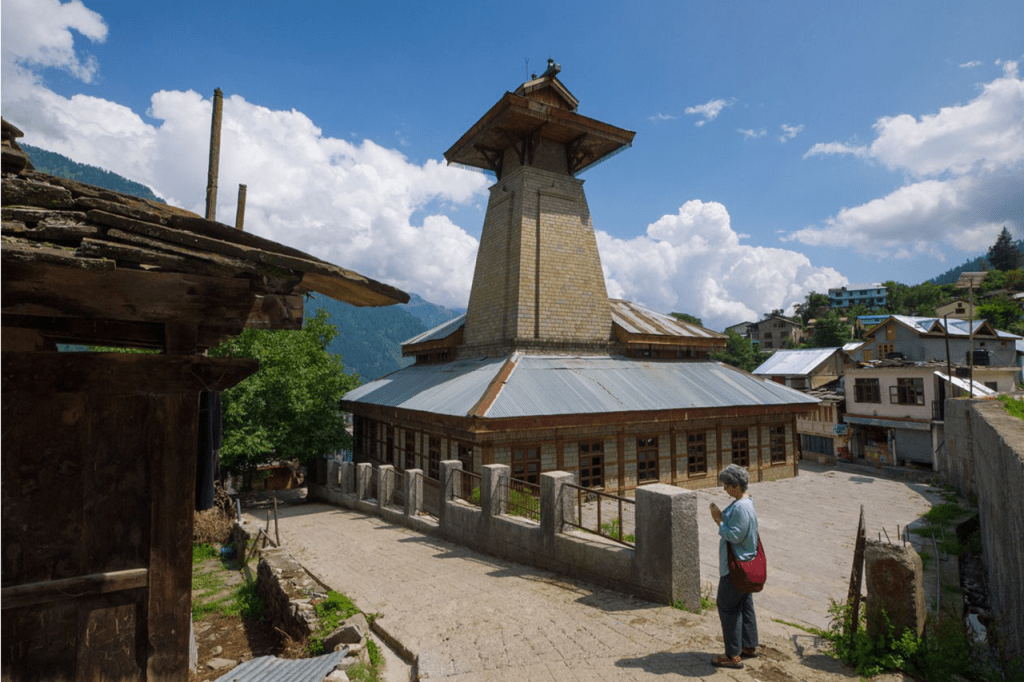
This ancient Hindu temple, which is devoted to Sage Manu, is very important to Hinduism. When you visit this location, you can learn about the numerous intriguing folktales connected to the construction of this temple. This old Manali temple is visited by a large number of pilgrims and tourists every day of the year. This location is important to see not only for its religious significance but also for its old, stunning architecture and wooden carving. Additionally, the views of the tall hills covered in luxuriant green forests that this temple offers leave onlookers struggling for air. This location’s calm atmosphere is soul-satisfying. If you’re travelling to Manali, stop by this location for a surreal experience.
Location: Old Manali, Himachal Pradesh-175131.
Distance from Manali Bus Stand: 4 Km.
Best time: May to June.
Entry Fee: No entry fee.
The Manali Gompa
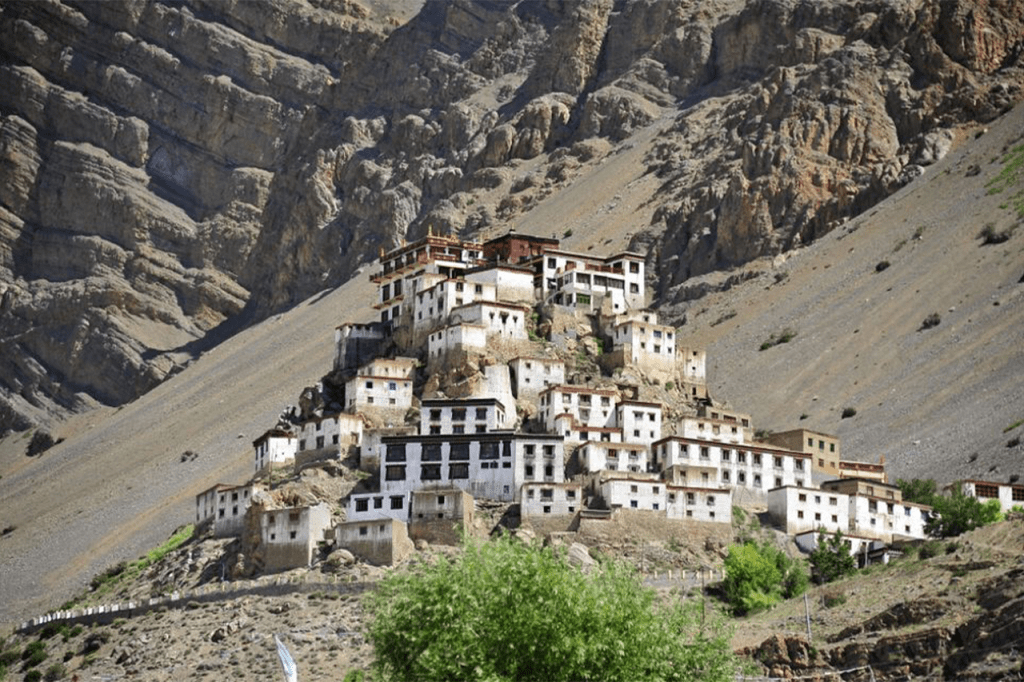
One of Manali’s most beautiful landmarks is the Gadhan Thekchhokling Gompa, also known as the Manali Gompa, due to its elaborate design and traditional Tibetan architecture. This monastery, built in the 1960s by Tibetan refugees, offers serene surroundings and unmatched spiritual energy. The Manali Gompa’s exquisite murals, which vividly depict important Buddhist events, and its pagoda-style roofs are some of its most notable features. The complex’s shops are a good place to purchase Tibetan handicrafts and souvenirs.
Location: Old Manali Road.
Timings: 6:00 am to 6:00 pm; closed on Sundays.
Bhrigu Lake
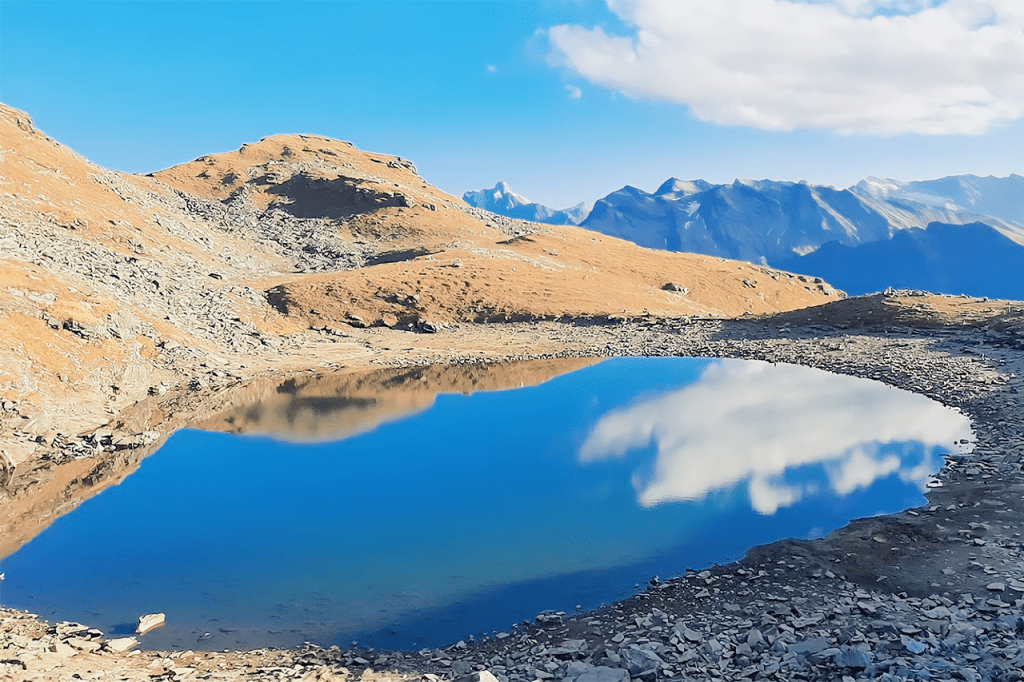
Imagine picture-perfect evergreen tree forests and alpine meadows close to a tranquil high-altitude water body. You’ve just now thought of Bhrigu Lake, one of the top hiking spots near Manali. If you’re planning to hike to the lake, you’ll want to acclimatise a little bit because it’s more than 4000 metres above sea level. The Pir Panjal Range’s scenery and sweeping views are what most people come here to see. This is one of the popular attractions of the Manali tour.
Distance from Manali: 18 Km.
Difficulty: Easy level trek
Best time: Mid-May to October.
Hampta Pass trek
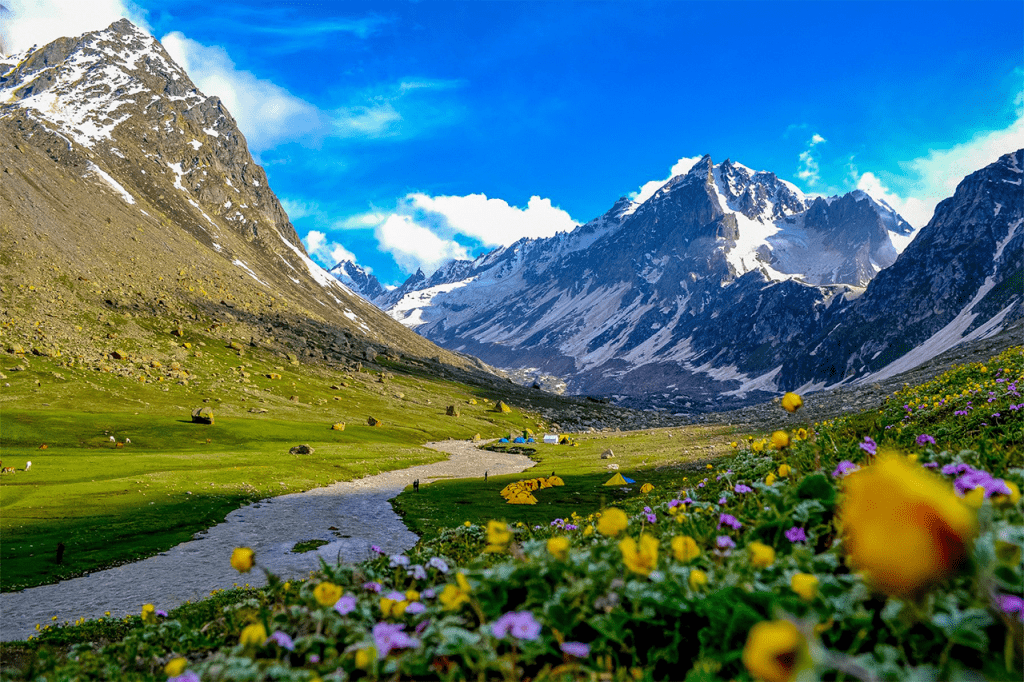
From Kullu to Lahaul, the Hampta Pass trek is one of India’s most spectacular crossover treks. From lush Kullu landscapes to desolate, desert-like vistas in Lahaul, trekkers can expect to see breathtaking scenery. The Hampta Pass trek, one of the easy-to-medium-difficult Himalayan treks, offers breathtaking views of the Kullu Valley and Lahaul Valley. The nearby Chandratal Lake is another major draw for the trek. The Pir Panjal Range’s Pir Panjal Pass is over 4000 metres above sea level, and the route includes some fascinating river crossings. Many organisations offer Hampta Pass trekking tours in Manali, and their costs change depending on the itinerary and the number of days. It passes through stunning meadows filled with wildflowers, glacial lakes, dense alpine forests, gurgling streams, and lofty peaks. On this five-day hike, you can see all of this change in the landscape. The highest elevation one can reach while on the trek is 14,000 feet.
Distance from Manali: 15 km.
Difficulty: moderate-level trek
Best time: mid-June to mid-October
The Nehru Kund
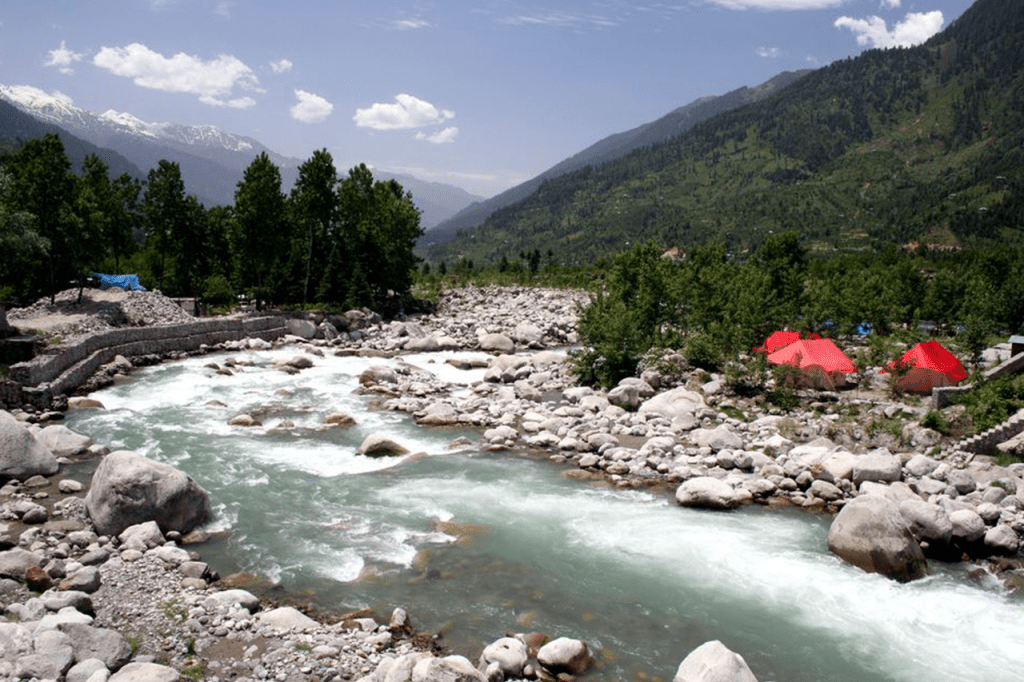
It is a natural spring that is close to Manali on the Manali-Leh highway. The spring bears Pandit Jawahar Lal Nehru’s name, who served as India’s first prime minister and regularly visited and drank from it while he was staying in Manali. Nehru Kund, a natural spring that can be found along the Manali-Rohtang Pass Highway, is a pleasant place to visit in the summer. The spring has that name because Nehru, India’s first prime minister, frequented it while he was staying in Manali and drank water there. This is a good stop for travellers going over to the Rohtang Pass because of the crystal-clear waters and the serene Himalayan landscapes. It goes without saying that Nehru Kund is a great place for nature enthusiasts and photographers. Visit this location as part of a Manali tour to take in the serenity and drink the spring’s crystal-clear water. Another reason why this is one of the best places to visit in Manali is the landscape that can be seen from here due to the location of this place.
Bashisht is located in Himachal Pradesh (175103).
Best time: May to October, 7:00 a.m. to 7:00 p.m., every day
Entry Fee: No entry fee
Arjun Gufa (Arjun Cave)
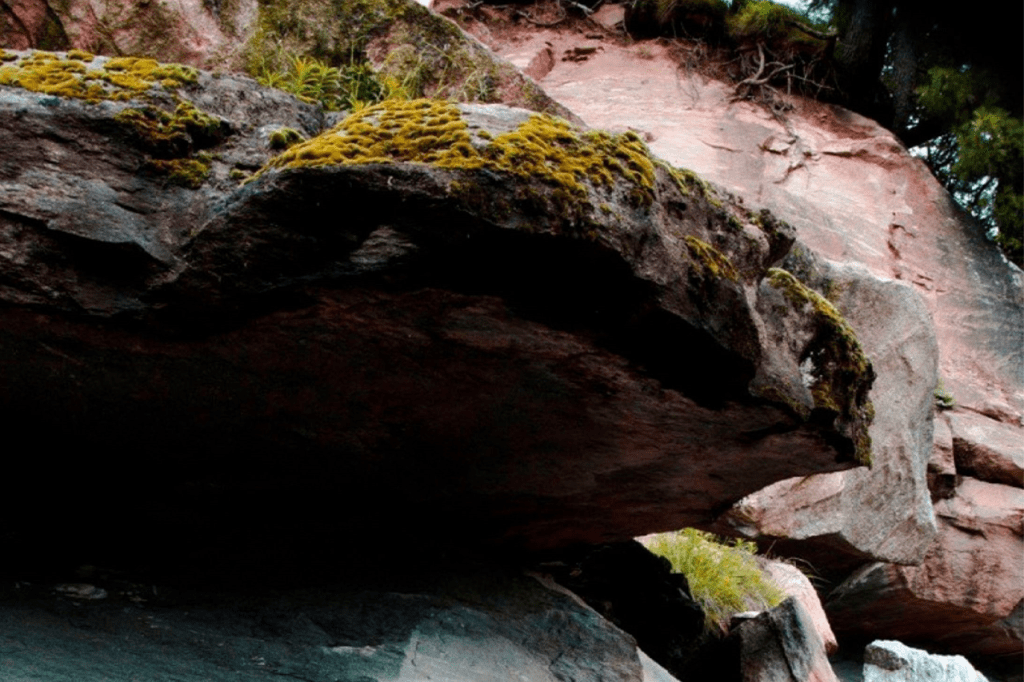
Arjun Gunfa is a location that can be reached by taking the road that leads to Naggar, which is about 5 kilometres from Manali. It is full of legends, folklore, and tales that date back thousands of years, making it one of the more offbeat places to visit on a Manali tour. The Arjun Cave, which is close to the Beas River’s raging currents, is linked to a legendary tale from the Hindu epic Mahabharata. Arjun, one of the Pandava brothers, is said to have meditated here, according to legend. Two other important sites close to the cave are Kunt Bhayo Lake and Kunti Mata Temple. The caves are located in Prini, a village on the left bank of the Beas River.
According to legend, Arjuna from the Mahabharata epic actually carried out his penance here in order to improve his dexterity when using a weapon known as the Pashupati Astra. Regardless of their religious preferences, tourists from all over the world come to this fascinating location to view the stunning natural rock formations. You can also take a trip up to the nearby Kunt Bhayo Lake and Kunto Matha Temple, both of which are stunning in their own right, as well as the Arjun Gunfa. The caves provide an unusual amount of peace, quiet, and solitude away from the Manali crowds. However, it is advised that you visit the caves in broad daylight under proper lighting conditions.
Location: Near Prisni Village, Manali
Best time: March to June
Entry Fee: No entry fee
Van Vihar National Park
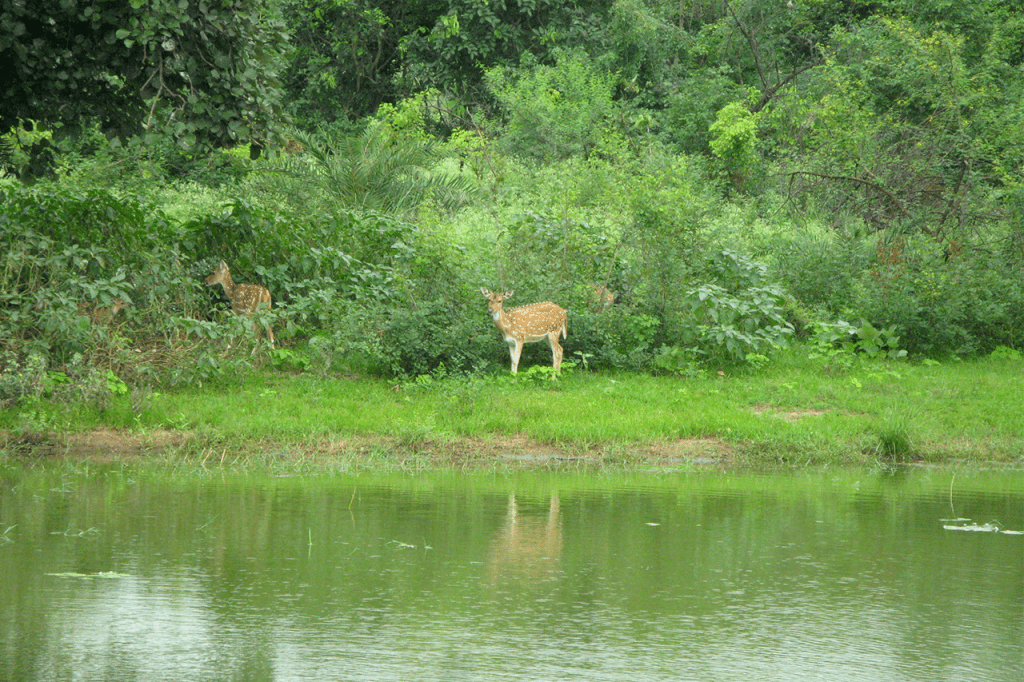
A quick stroll through Van Vihar National Park is highly advised if you’re looking for some peace and quiet in the hipster atmosphere of Manali town. Van Vihar is a public park that features lush vegetation and deodar trees that reach the sky, making it one of the most well-known attractions in Manali tour. Even better, you can board a boat and navigate this artificial lake. Bird watchers will delight in spotting regional species in the park, particularly early in the day.
Location: Dhungri Village
Timings: 8:00 a.m. to 7:00 p.m. (summer); 8:00 a.m. to 5:00 p.m. (winter).
Entry Fee: ₹ 5 per person; ₹ 30 for 15 minutes of boating.
Himalayan Nyingmapa Buddhist Temple
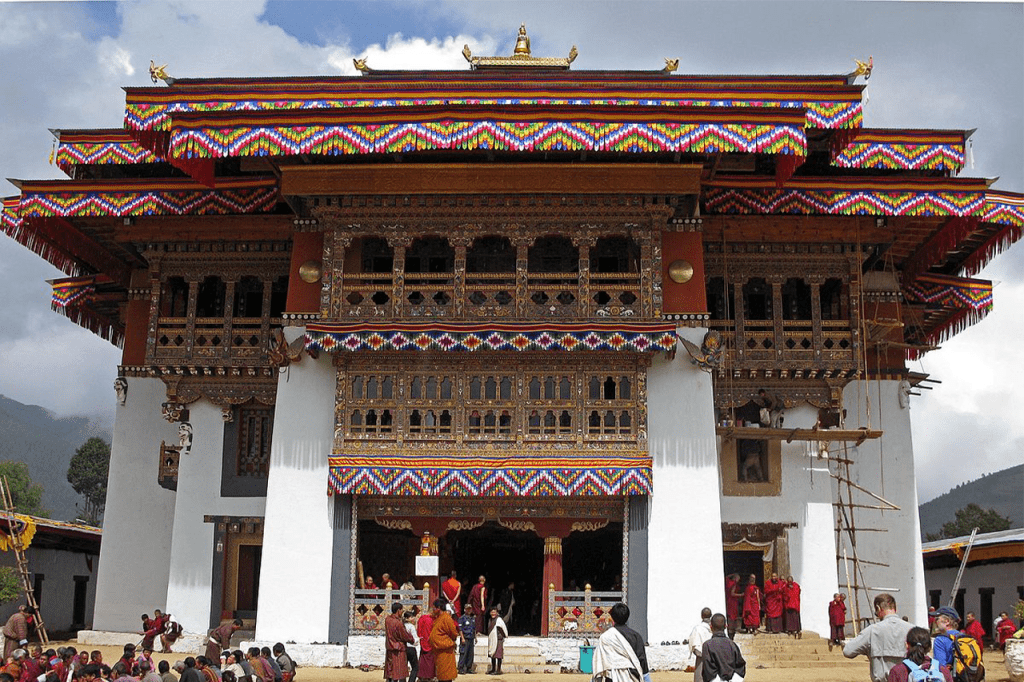
One of the top attractions in Manali is this ancient Buddhist monastery with a structure resembling a pagoda. Its intriguing architecture in Tibetan style is beautiful to look at. Massive, two-story-tall statues of Lord Buddha and striking wall paintings are what draw so many people to this temple. Visit this temple to experience the peace and joy it exudes. This Shangri-La-like haven is located in the centre of a busy city, and the vibrant colours and pagoda-style architecture give the entire scene a mystical allure.
While you’re here, be sure to look at the wall paintings and spin the prayer wheels. You can find your spiritual side at Nyingmapa, one of Manali’s top monasteries. Without spending a few minutes in meditation to gain insight into the daily lives of Buddhist monks, a visit to this location would be incomplete. The tranquilly of this monastery, which is surrounded by Manali’s busy Mall Road, stands in stark contrast to what is found outside its walls.
Location: Pangan Gompa Rd., Himachal Pradesh 175143.
Best time: October to May, 6:00 a.m. to 7:00 p.m., every day.
Entry Fee: No entry fee- photography is charged at ₹ 20.
Vashisht Hot Water Springs and Temple
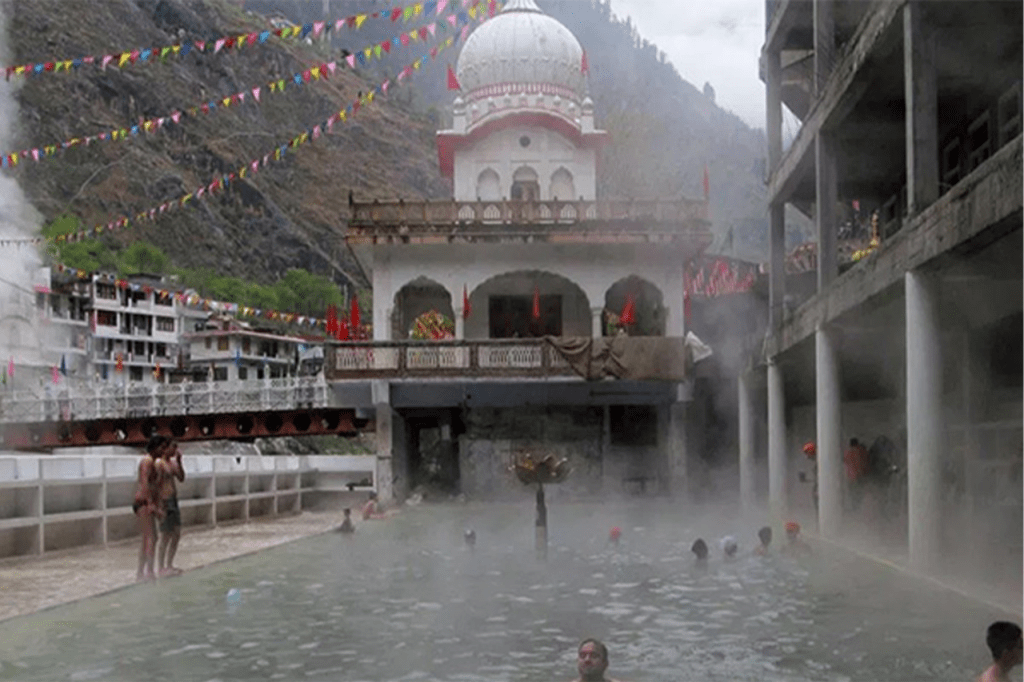
Vashisht village, a location of great spiritual significance, is home to a stunning temple surrounded by the dramatic Himalayan topography. The shrine’s interior is decorated with wooden carvings, old figures, and paintings, and it is thought that the temple has a history dating back more than four thousand years. Hot springs that are thought to have therapeutic properties are present, which further distinguishes this location. Additionally, the location gives visitors from the present a window into Manali’s earlier history. The local woollens are well-known, so you can also enjoy some shopping there.
Location: Vashisht Village
Timings (temple): 7:00 a.m. to 9:00 p.m., every day.
Museum of Himachal Culture and Folk Art
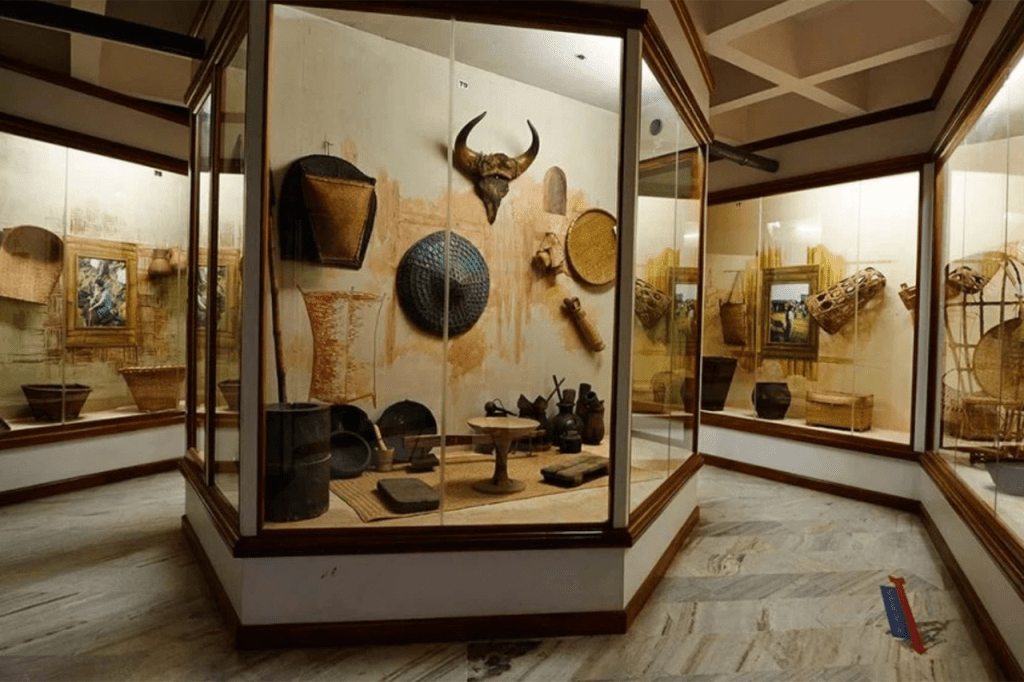
For those who are interested in learning more about the customs and extensive local history of the area, a quick visit to the Museum of Himachal Culture and Folk Art is advised. A variety of festival dance masks, traditional clothing, and musical instruments are among the exhibits here. This museum was founded in 1998 to display the historical artefacts and folk art of Himachal Pradesh. Only a short distance separates it from Manali’s renowned Hidimba Devi Temple. The museum is home to a very fascinating and impressive collection of old items and other things that reflect Himachal Pradesh’s culture and heritage. There is a lot to look at and take in here, including traditional Himachali attire, kitchenware, and ornaments. Start your research into Himachali culture here if you’re interested in it, as this museum will give you an overview of it and is one of the top attractions in
Manali tour
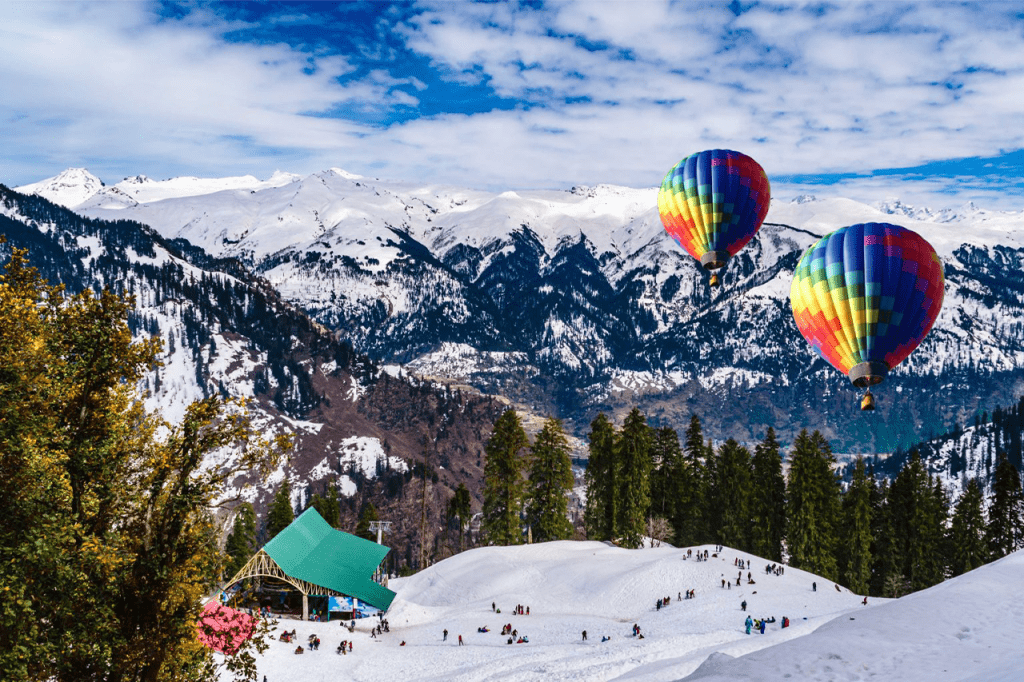
Location: Utopia Complex, Hadimba Temple Road
Timings: 9:00 a.m. to 7:00 p.m. (April to November); 10:00 a.m. to 6:00 p.m. (December to March)
Entry Fee: ₹ 10 per person
Distance from Manali Bus Stand: 2 km from Manali
Kothi
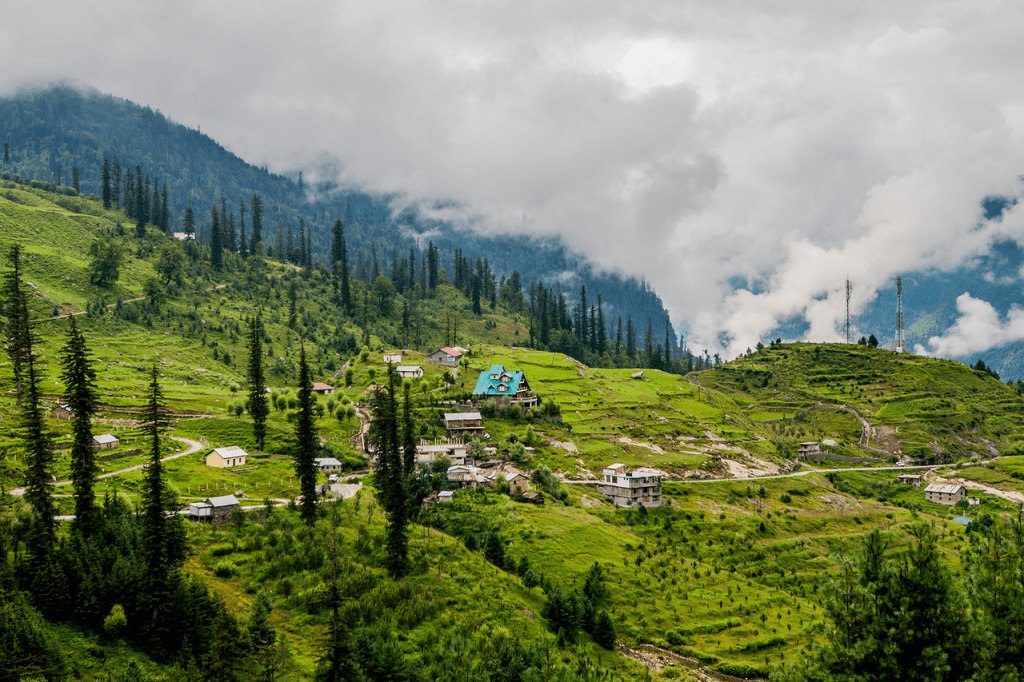
Kothi is a quaint mountain village that is famous for its picturesque setting and the magnificent views it provides of the snow-capped peaks and glaciers. Kothi is situated on the famous Spiti Highway at an altitude of 2500 meters. It is located at the base of Rohtang Pass, and the Beas River, which flows through this area, sculpted the landscape. The village is a great place to camp as well, especially if you intend to walk through Rohtang Pass. Additionally, the village is home to a temple honouring the goddess Shuwang Chandika. This village has appeared in numerous Bollywood films because of its exceptional beauty. Great poets and painters have also resided in this village, where they were encouraged to develop their craft. Geothermal springs are another draw to Kothi. It is the perfect place to unwind while admiring the manifestation of God’s likeness in the form of Kothi.
Distance from Manali: 12 km.
Best time: April to June
Beas River
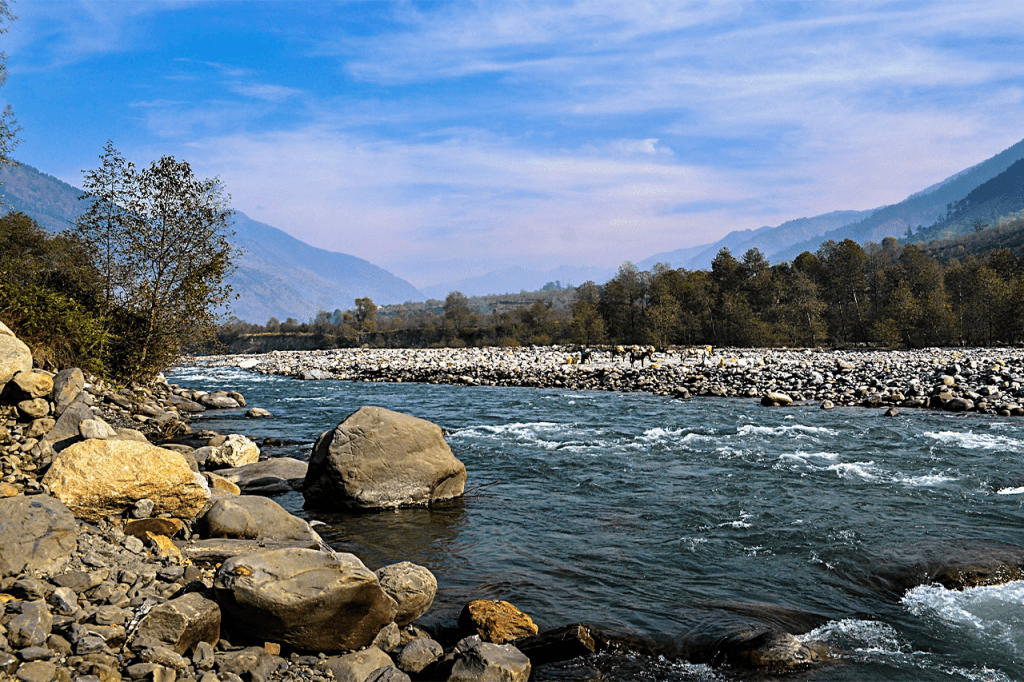
On the majority of your Manali tour, you will see the Beas River, a local natural landmark. The holy Himalayan River Beas is a seductive attraction in the already breathtaking Manali scenery. Views of the crystal-clear waters, snow-capped mountains, and dense pine forests are breathtaking. You can get some of the best views of the river valley in Vashisht village, and you can get up close to its crystal-clear waters by travelling to Kothi. Water sports like kayaking and rafting are popular in the Beas, and the village of Pridi is known for having some of the most thrilling rapids. The enormous stone boulders perched precariously between the swiftly flowing river’s raging waters are an amazing sight. Rafting in the Pirdi Stretch’s grade II and III rapids is a favourite activity for thrill seekers. As an alternative, there are lovely camping areas all along the river that are excellent for overnight camping. You can take long walks along the verdant riverside in one of Manali’s most picturesque locations.
Location: Near the Manali bus stop
Best time: The best time to raft is between May-October
Entry Fee: No entry fee
Great Himalayan National Park
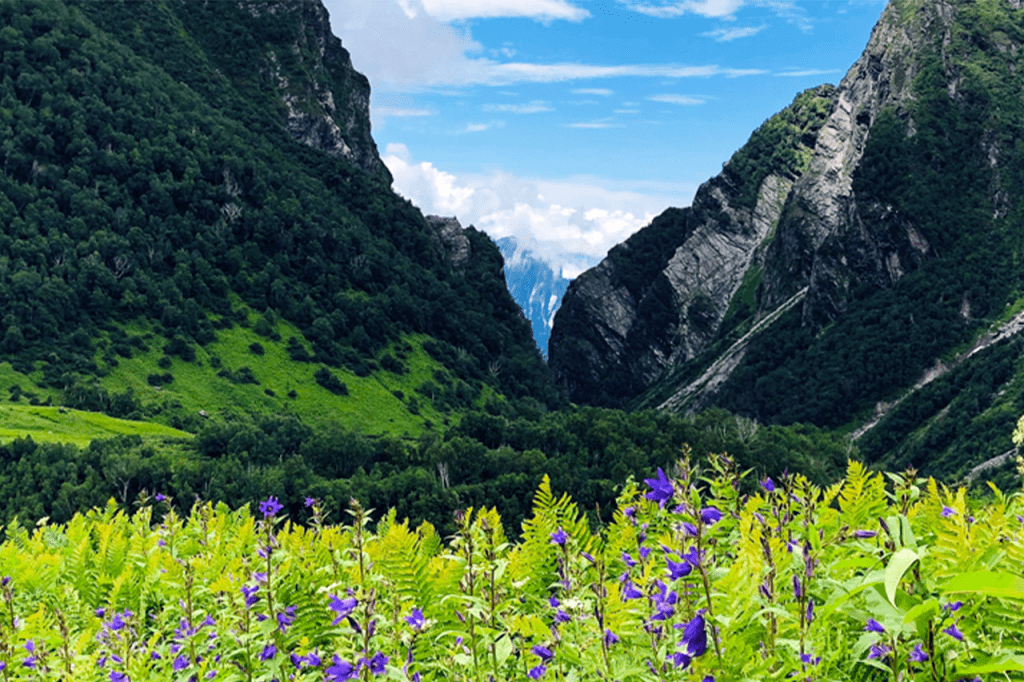
The Great Himalayan National Park is a UNESCO World Heritage Site and known as one of the top tourist destinations in Manali tour and the surrounding areas. This park, which covers 452 square miles, is situated 70 kilometres from Manali town. Over 1000 plant species, 209 bird species, and 31 mammal species are among the rare species that call the park home. This park’s elevation ranges from 1,800 metres to 5,800 metres. It has some of the most picturesque natural settings and is home to some of the Himalayas’ most endangered fauna species. Although this area is well-liked by tourists from India and abroad, it has been decided to keep it “roadless” to prevent excessive human interference, which is why you can find nature in its purest form here.
There are populations of brown bears and Himalayan tahrs in addition to the elusive snow leopard, the area’s top predator. The wildflowers and glacial valleys that dot the entire landscape will make for wonderful photographs. In specific areas of the National Park, you can go camping and engage in other enjoyable outdoor activities. The park has many inexpensive but respectable lodging options, and entrance permits must be obtained in advance.
Distance from Manali: 70 km.
Best time: March to June and then September to November, 10:00 a.m. to 5:30 p.m. every day
Entry Fee: ₹50 for Indians; ₹200 for foreigners
Gulaba
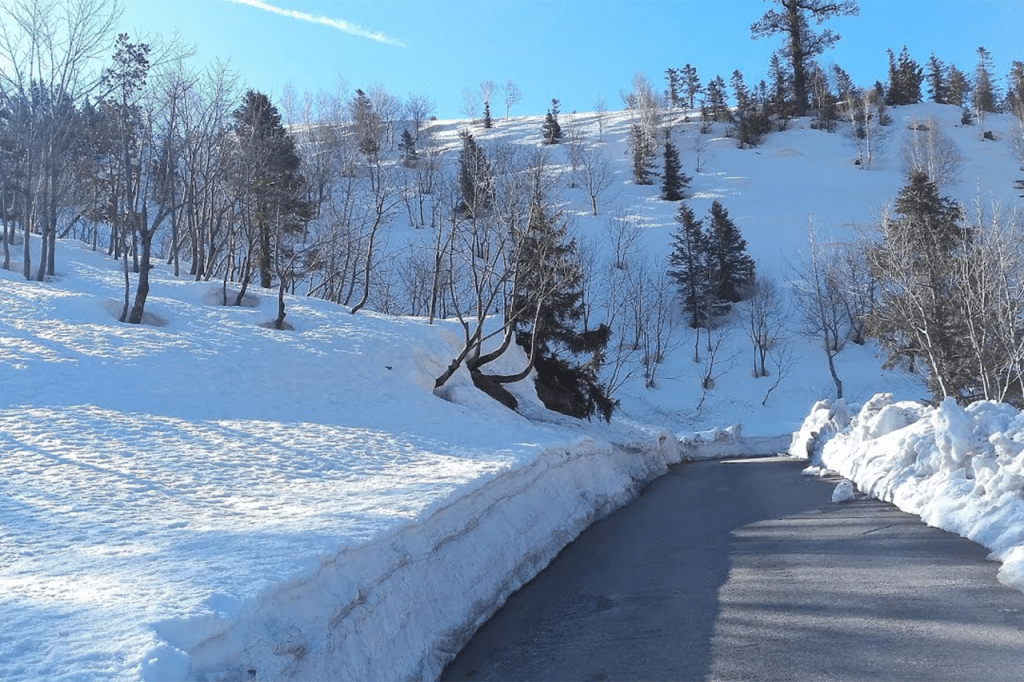
Visits to neighbouring villages should be part of a Manali tour if you want to learn about the region’s distinctive culture and take in its breathtaking scenery. You won’t be let down if you include Gulaba on your list. Raja Gulab Singh camped here while he was invading China, and this picturesque Himachal Pradesh village bears his name. The main draw of this location is the year-round presence of snow. The village has some of the most alluring trekking routes in Himachal Pradesh, making it a favourite destination for winter tourists yearning for some snowy landscapes. Because of the low light pollution and high altitude, many people think it’s a good location for camping and stargazing.
Summertime, however, causes some of this village to turn green, which adds a different kind of charm. Gulaba is undoubtedly one of Himachal Pradesh’s most picturesque locations. This region receives a lot of snow, making it a sought-after location for people interested in snow adventure sports. Gulaba, which is situated at a height of 4300 metres in the Pir Panjal Range, is unquestionably one of the most well-liked destinations in Manali. This is due to both the area’s stunning, idyllic scenery and the options for adventure enthusiasts like skiing and paragliding.
Distance from Manali: 27 km.
Best times to visit: April–June and October–January
Old Manali
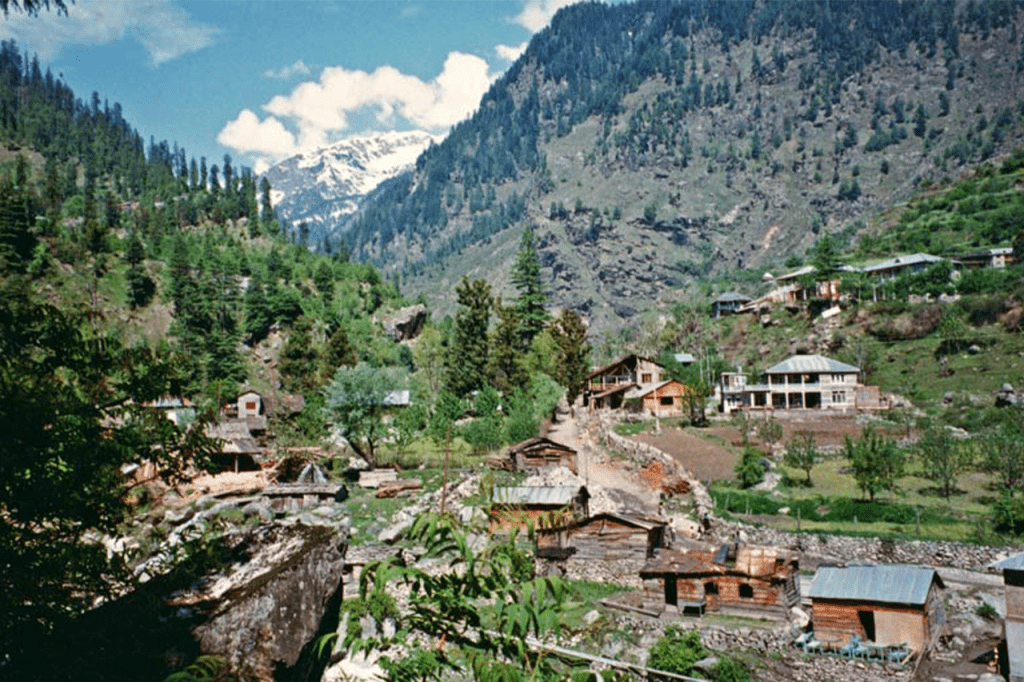
The more historic area of town is referred to as “Old Manali. On a Manali tour, visitors can stroll the streets and catch glimpses of a bygone era in this area, when Manali was a sleepy pilgrimage town before the hordes of backpackers descended upon it. Because of the forests and apple orchards that surround the settlement, Old Manali offers some of the best views in the area. Old Manali is separated from the main town by a bridge that spans the fast-moving Manaslu River, which is a famous sight in and of itself. You can go café hopping while you’re here at some of Manali’s well-known coffee shops, including Café 1947, Born Free, Evergreen, and Sunshine, or you can go shopping for dream catchers, boho-chic clothing, shrugs, and woollens. The elegance of the small town, which is dotted with apple orchards and wooded mountain trails, ensures that it will be included as one of the top attractions in any honeymoon package for Manali.
The town’s bustling centre is the Mall Road, which runs through it and is lined with unassuming shops selling handmade goods and adorable little cafes selling delectable fare. A 16th-century cave temple hidden among Old Manali’s cedar forests is one of the most renowned places to see on a Manali tour. Here, thrill-seekers can bike through the Old Manali slopes or rappel down the Beas River that runs by the town. Along the banks of the Beas, there are a number of beautiful picnic areas as well, making it a great place to spend a day with a loved one.
Rahala Falls
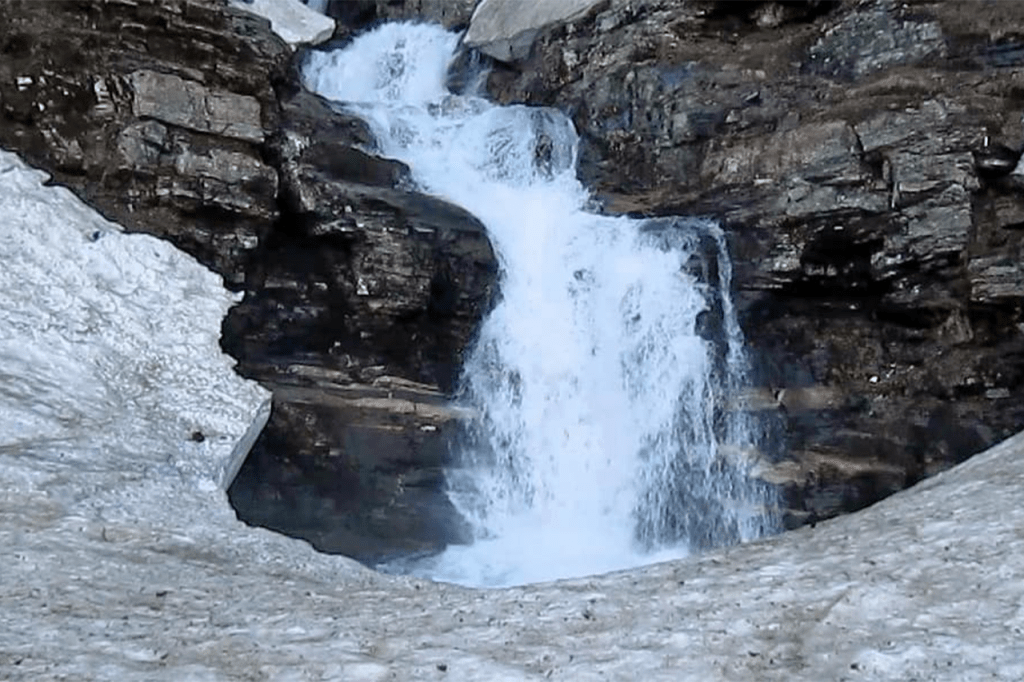
The Rahalla Falls, also known as Rehala Falls, are one of Manali’s most breathtaking natural attractions, cascading from an elevation of 8,500 feet. They are a must-see on your way to this snowy paradise and are situated 16 kilometres outside of town on the route to the Rohtang Pass. Glaciers melt as they descend from the mountains, creating the falls. It is one of the best locations for photography or to simply relax and take in the scenery.
Trekking is an option for the more adventurous who want to climb up the mountains behind the waterfalls. The waterfalls are surrounded by dense stands of Deodar, birch, and pine trees, making it one of the most beautiful locations to take pictures. Anyone who chooses to visit the location is instantly brought into peace and harmony by the sight of the location and the soothing rhythm of the falls.
Location: Leh-Manali Highway.
Entry Fee: No entry fee.
Best time: The waterfalls are best visited in the months of March and November, from 6:00 a.m. to 5:00 p.m. every day.
Jagatsukh
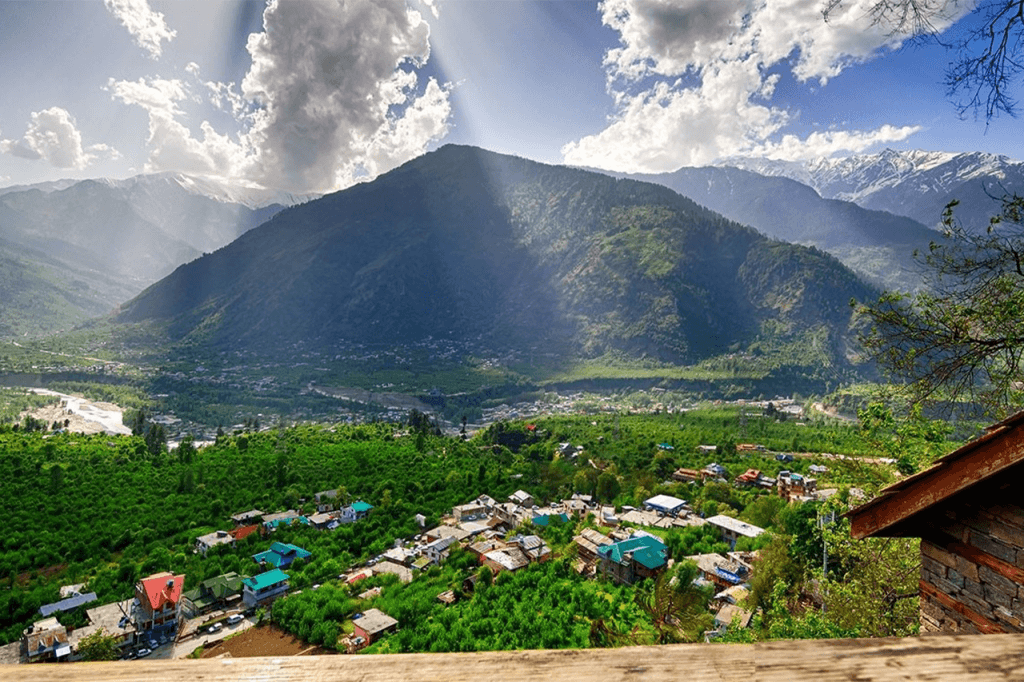
The charming town of Jagatsukh, which is tucked away in the mountains, is well-known for its temples. It is a visual treat to visit this place because of the backdrop of shimmering snowy peaks and dense, lush forests. This holy village is one of the most fascinating places to visit on a Manali tour and is known for its ancient Shiva Temple and Gaurishankar Temple, both of which are built in the Shikhara style. One of the larger villages in the Kullu area is Jagatsukh, which is a good place to take in some local architecture. Jagatsukh can be used as a base for hikers who want to reach the Deo Tibba Mountains.
One of the many intriguing tourist attractions in the Manali region is the Devi Sharbali Temple. According to legend, these temples were built in the eighth century. Visitors to this former capital of Manali come here to relax in the tranquil valleys surrounded by snow-capped mountains, meadows, apple orchards, and dense pine forests. As the starting point for the Deo Tibba trek, it is also a well-liked destination for day hikes. Kalath, a hot spring in the area, should not be missed. One of the few areas in Manali that can be easily explored in a day is Jagatsukh village. There are lots of homestays available, through your Manali tour.
Location: Kullu.
The best time to visit : October to June.
Entry Fee: No entry fee.
Naggar Castle
Naggar Castle, a historical structure dating from the 15th century, is situated in the Beas Valley in beautiful surroundings. It is part of the Kullu Region. The castle, which was constructed by Raja Sidh Singh of Kullu, is now a historic hotel run by the Himachal Pradesh Tourism Development Corporation. The castle’s wooden construction is a work of architectural genius and exhibits the region’s distinctive style along with some European additions made over time. The castle offers stunning views of the town and the surrounding alpine forests.
Location: Naggar Town, Manali.
Timings: 7:00 a.m.–10:30 p.m. (winter hours may vary)
Entry Fee: ₹ 15 per person.
Distance from Manali: 21 km
Rohtang Pass
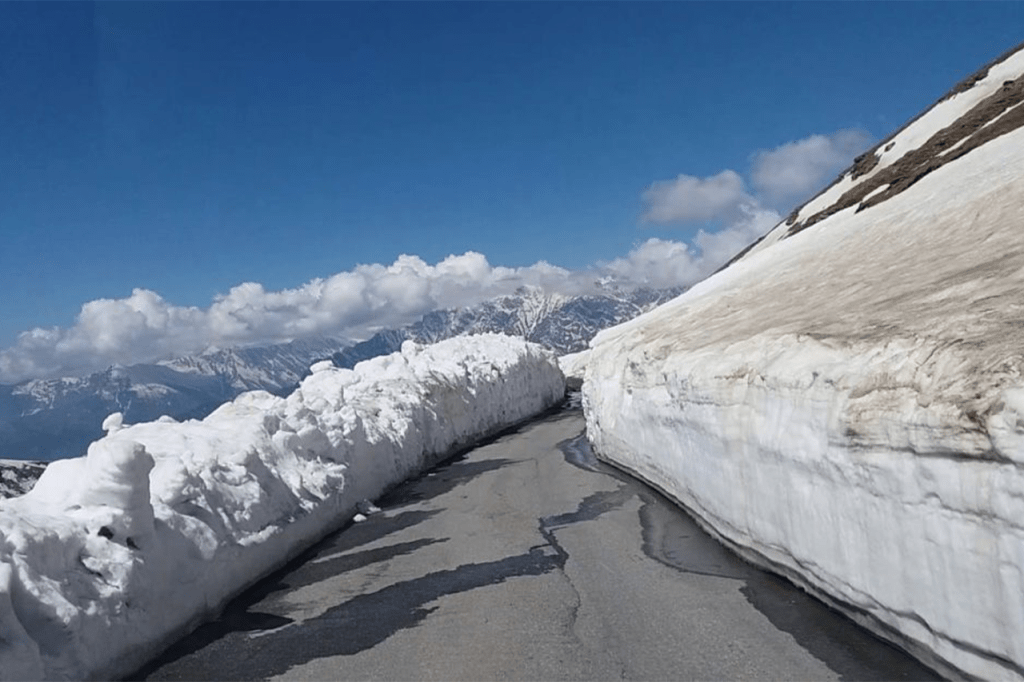
You won’t regret allocating a day in your itinerary for Manali to visit Rohtang Pass. This high mountain pass on the Pir Panjal Range, which is situated at an elevation of 4000 metres above sea level, will leave you gasping for air. Rohtang Pass has long been a favourite destination for artists, photographers, and nature lovers, in addition to being a haven for adventure sports like mountain biking and skiing. In many Bollywood films, including Jab We Met, the Pass has appeared.
Location: Leh-Manali Highway.
Timings: 24×7.
Distance from Manali: 51 km.
Katrain
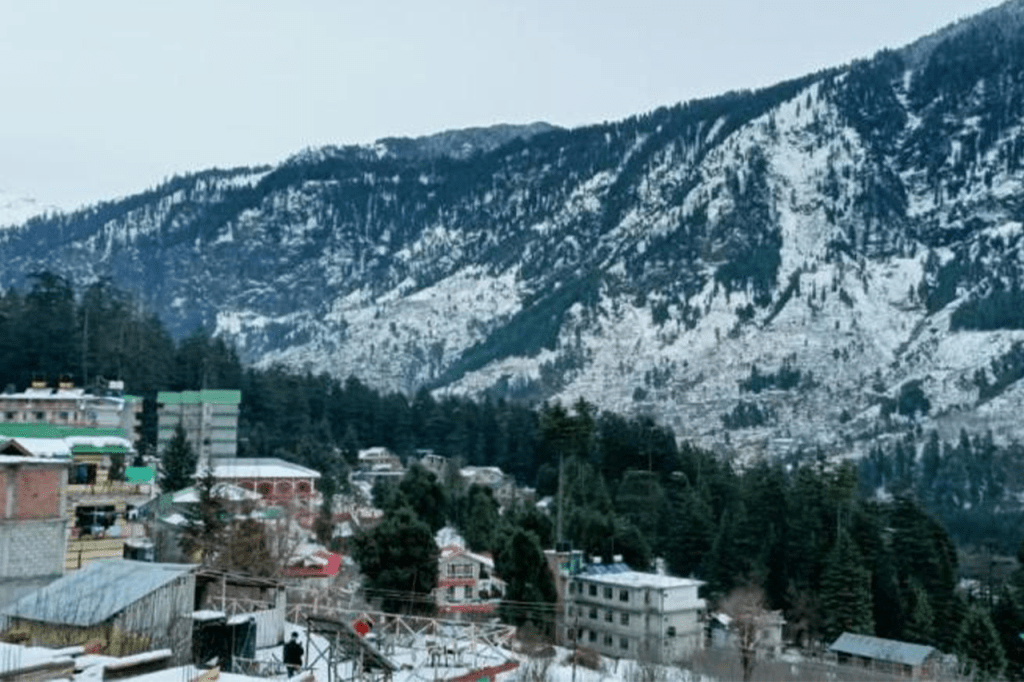
Katrain is a picturesque hamlet situated in the middle of a lush valley, much like any Himalayan village. The valley’s widest point, which is also one of Manali’s top tourist destinations, offers breathtaking views of the 10,000-foot-tall Bargarh Peak. In contrast to the sweeping landscapes you will see on the rest of your Manali excursions, Katrain, a fishing haven, offers an undulating landscape. The community meets all the criteria for a classic Himachali community.
While visiting, be sure to sample some of the regional specialties that feature simple, wholesome flavors. In addition to having an abundance of trout in its clear waters, Katrain is a good location for hiking. Spend some time in the vast apple and plum orchards while you’re here. Brown and rainbow trout fish abound in Katrain’s waters. You can go fishing as well as visit a sizable trout farm that the government maintains. There are wonderful treehouse-inspired homestays in this area, ideal for a short stay on your Manali tour.
Location: Naggar district, Kullu
Best time to visit: March through June and October through February.
Entry Fee: No entry fee.
Gauri Shankar Temple
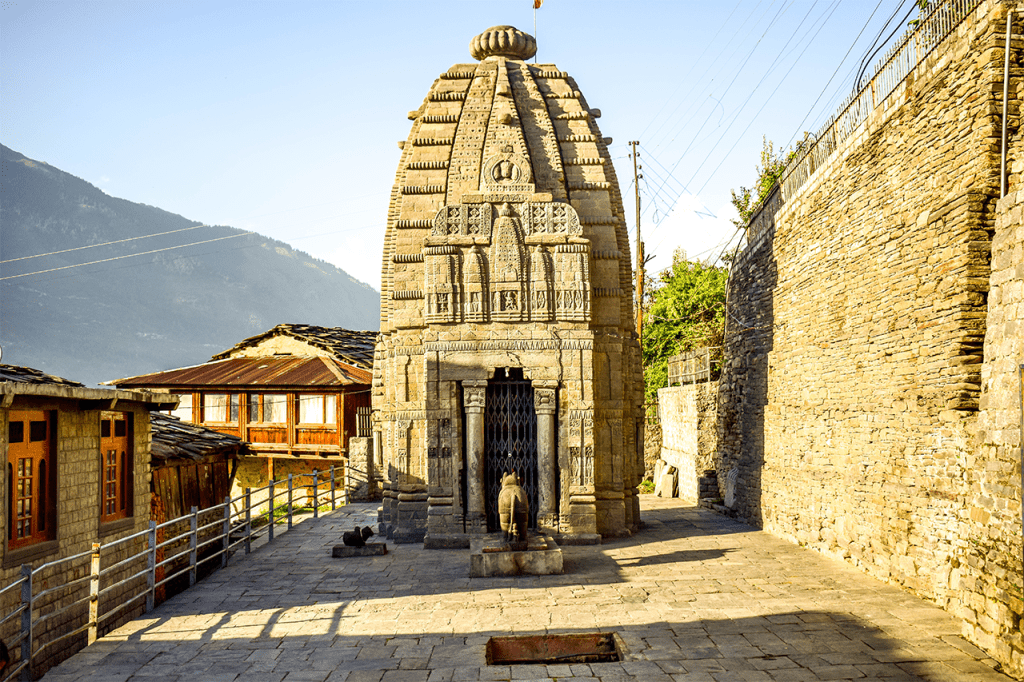
The Shikhara-style architecture and numerous carvings on the stone walls of the Gauri Shankar Temple are well-known features. The temple is devoted to Lord Shiva and dates back to the 12th century. It is thought to be the final building built in the Gurjara and Pratishree traditions. Numerous gods and other sacred symbols are portrayed in the carvings on the walls.
One of the most significant temples in Manali is the Gauri Shankar Temple, which is surrounded by lush vegetation. It is intricately carved out of stone and constructed in the traditional Shikhara style. There are carvings, motifs, a Shiva lingam, and a statue of Nandi on nine levels inside. According to local lore, this temple was unearthed exactly as it is. It’s interesting to note that this protected monument has no temple roof, allowing visitors to see the statues in full view of the sky.
Location: Naggar Castle Road.
Timing: Every day from 8:00 a.m. to 7:00 p.m.
Distance from Manali: 22 km.
Manali Sanctuary
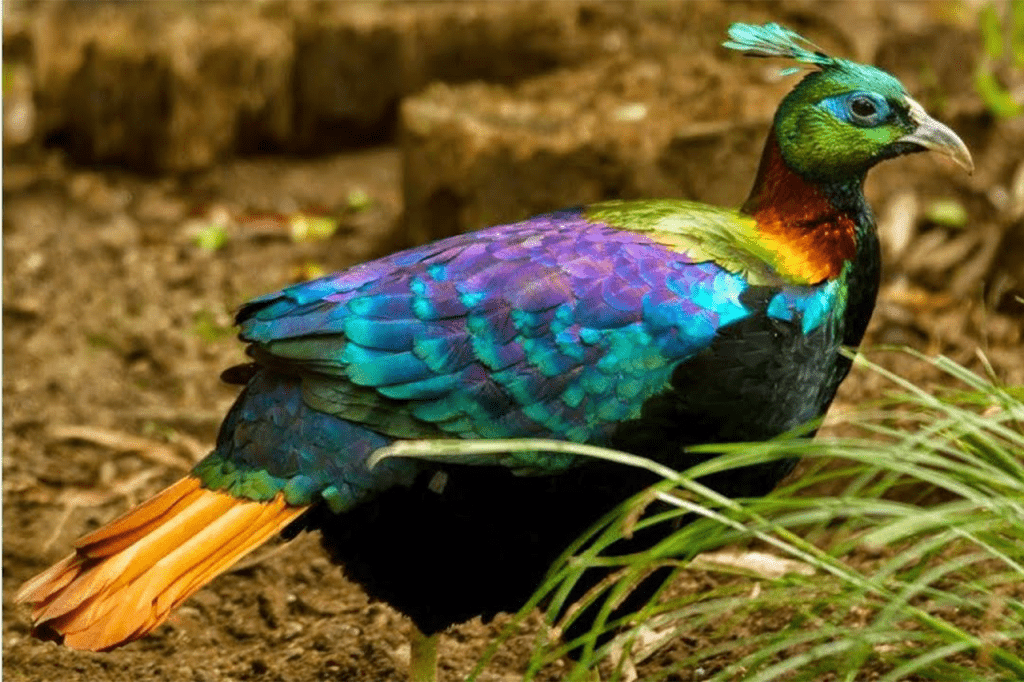
If you want to see the local mountain wildlife and the many different types of plants and trees, visiting this sanctuary is a must on your Manali tour. About two kilometres from town, the Manali Sanctuary offers an unmatched wilderness experience. Numerous rare and endangered species of animals can be found in the 31.8 square-kilometer sanctuary. You can see animals and birds like Barking Deer, Flying Fox, Kashmir Flying Squirrel, Himalayan Black Bear, Snow Pigeons, Chakor, Treecreepers, etc. in this significant area of the protected northwest Himalayan biogeographic zone.
If you enjoy taking pictures, keep your zoom lenses close by during the summer when ibex herds enter the range. Groves of maple, walnut, and deodar trees give this haven more allure, especially in the fall when the leaves paint the landscape with a rainbow of hues. Adventurers can choose from the sanctuary’s hiking and camping options. Look for dense stands of trees like poplars, willows, horse chestnuts, deodars, and stands of rhododendrons that are blazing red. The sanctuary, one of Manali’s must-see attractions, is situated on the picturesque banks of the Manalsu Nullah, with tall mountains serving as a backdrop.
Location: Circuit House Marg
Distance from Manali Bus Stand: 2 km.
Best time to visit : March till June and October to February- Everyday 9:00 am to 6:00 pm.
Entry Fee: INR 10 per person.
Nicholas Roerich Art Gallery and Museum
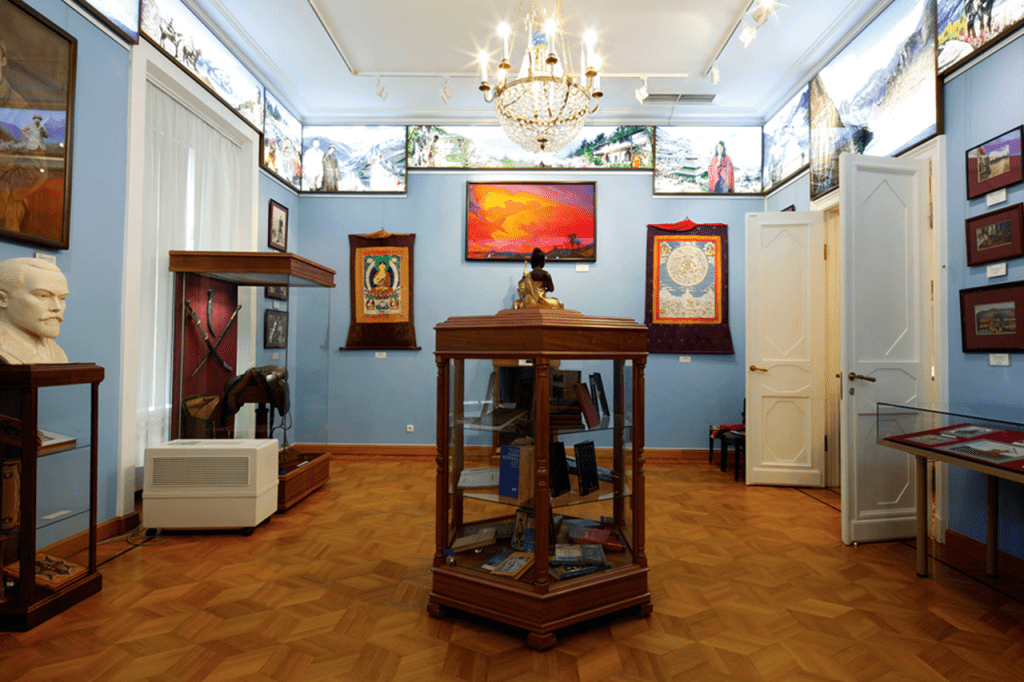
The Nicholas Roerich Art Gallery and Museum honours a well-known Russian artist who spent decades in Himachal Pradesh after fleeing the revolution. Rare images of the artist, landscape paintings, and images of the native people are among the artefacts on display here. The structure that once housed his home is now home to the museum, which was established in 1962.
Location: Naggar Village
Timings: 9:00 a.m.–5:00 p.m.; closed on Mondays
Entry Fee: ₹ 30 per person
Distance from Manali: 21 km.
Chandrakhani Pass
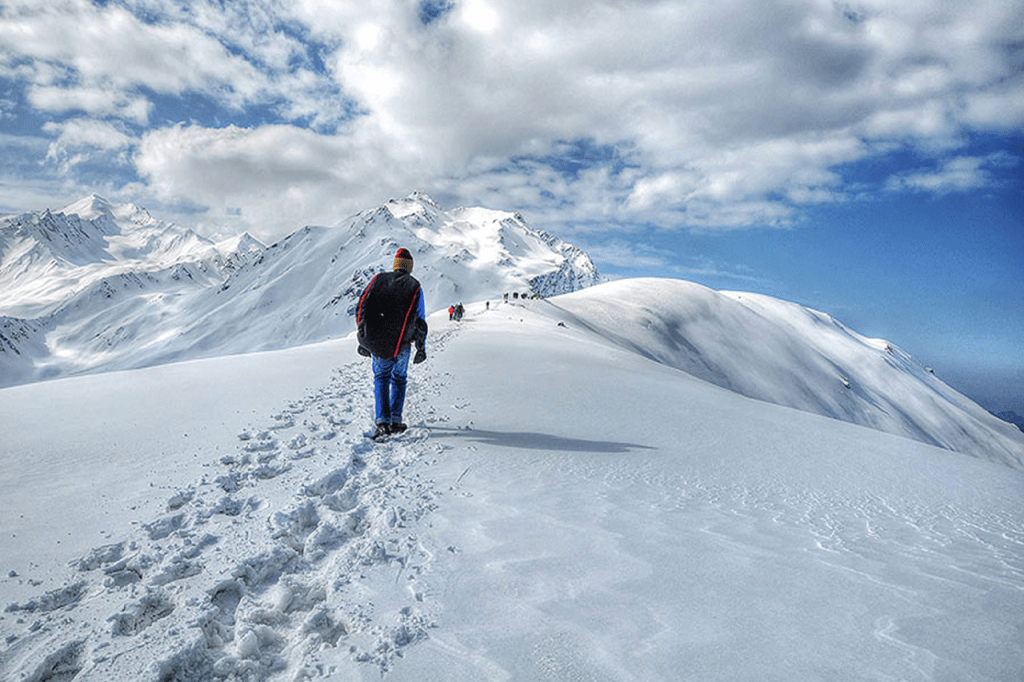
This breathtaking low-altitude trek gives you a unique opportunity to experience the diversity and magnificence of the Himalayas. This 10-day nature excursion will take you along rough trails lined with wildflowers through dense stands of chestnut, pine, and deodar trees. The well-known village of Malana, which is home to a unique community and is well-known for its cannabis crops, is also accessible from this pass. The Deo Tibba, the Parvati range, and the Pir Panjal are just a few of the notable peaks in the area that can be seen from Chandrakhani Pass, a popular location for photographers. At Celanti, you stroll through the charming Ramsu village, the historic Jamlu Temple, and emerald meadows with herds of grazing sheep. You will have views of the impressive Parvati and Deo Tibba mountain ranges the entire time you are trekking. To get to Kasol and Malana, cross the rocky ridges along the Malana River.
Distance from Manali: 21 km from Manali town
Difficulty: Easy to moderate level trek
Best time to visit: Mid-June to early October
Rozy Falls
This stunning waterfall, one of the most alluring places to visit on a Manali tour, is surrounded by towering deodar trees and is framed by lush mountains and valleys. It’s impressive to see the water gushing from the large rocks. It is a well-liked location where people go to spend the day picnicking and admiring the natural beauty. Here, one of the best ways to pass time is to listen to the sounds of falling water while surrounded by serene nature. For quick nature strolls, there are lovely trails close to the falls.
Location: Leh-Manali Highway
Best time: After the monsoons (mid-September) to see the falls in their full glory
Entry Fee: There is no entry fee.
Jana Falls
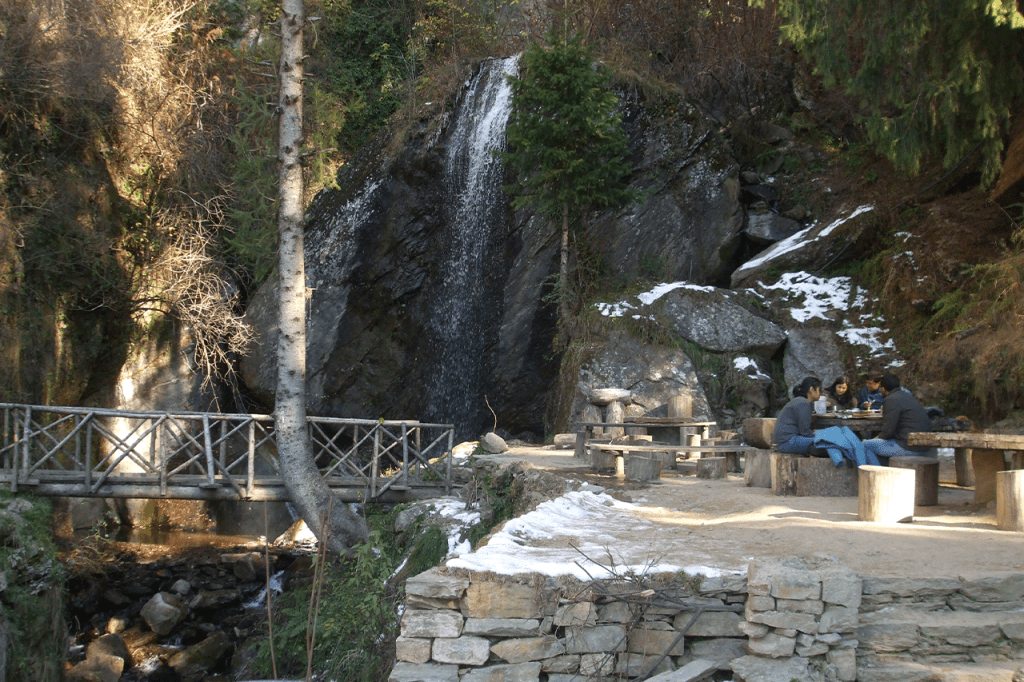
These falls, which are among the most magical locations in Manali and are situated in the charming village of Naggar, are a must-see for nature lovers. The milky white waters, which plunge from a height of about 30 feet, create a stunning contrast with the brown rocks and dense vegetation. The experience of visiting these falls is made even more beautiful by the surrounding views of clear blue skies, tall peaks, and meadows. A charming wooden bridge nearby is a great location to photograph the falls. Swim in the plunge pool’s cool water for a revitalising dip.
Location: Jana Village-Naggar, Kullu
Best time to visit : after the monsoons (mid-September) or the pleasant summer months of March to June.
Entry Fee: There is no entry fee
Siyali Mahadev Temple
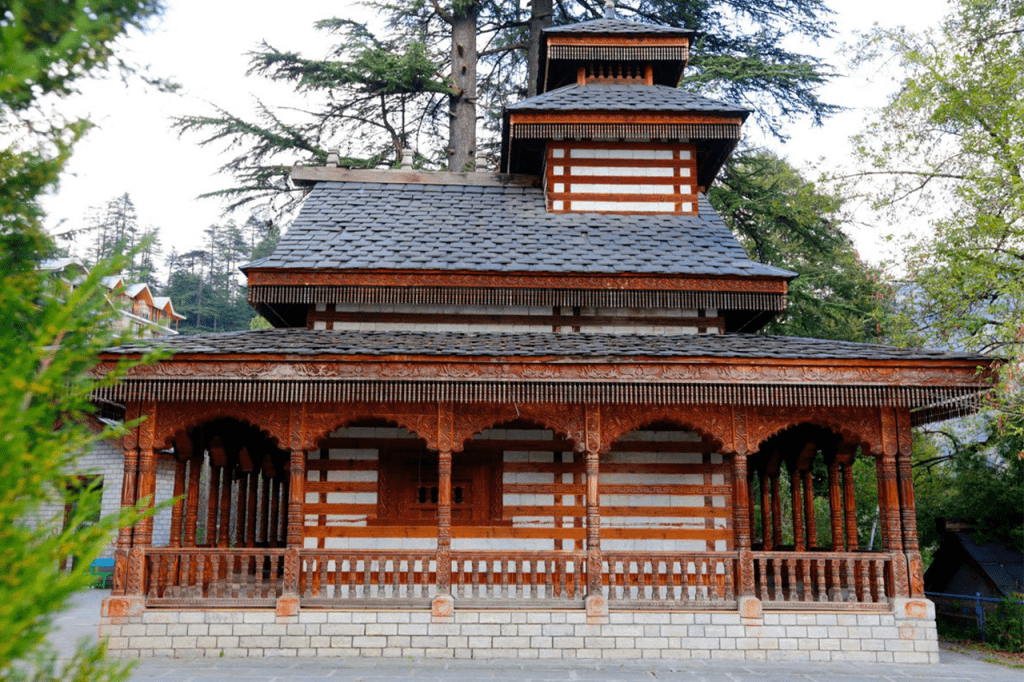
One of the most well-known attractions on your Manali tour is this ancient Shiva temple, which is known for its intricately carved wooden architecture. The snow-capped mountains and trees create an amazing contrast with the deep brown hues of the temple. Inside the temple, there are carved pillars, doors, four-level pagodas, and chalets. Within the temple, a historic Shivalinga is located and is encircled by lovely wooden frames. The place has a very peaceful atmosphere thanks to these panoramic views and the fresh mountain air. Here, you can spend a lot of time conversing with locals, engaging in meditation, and taking in the scenery.
Location: Hadimba Temple Road, Siyal
Best time: While it’s a year-round destination, the temple is one of the top places in Manali to be visited during Shivratri celebrations in February.
Entry Fee: No entry fee.
Manali Bazaar
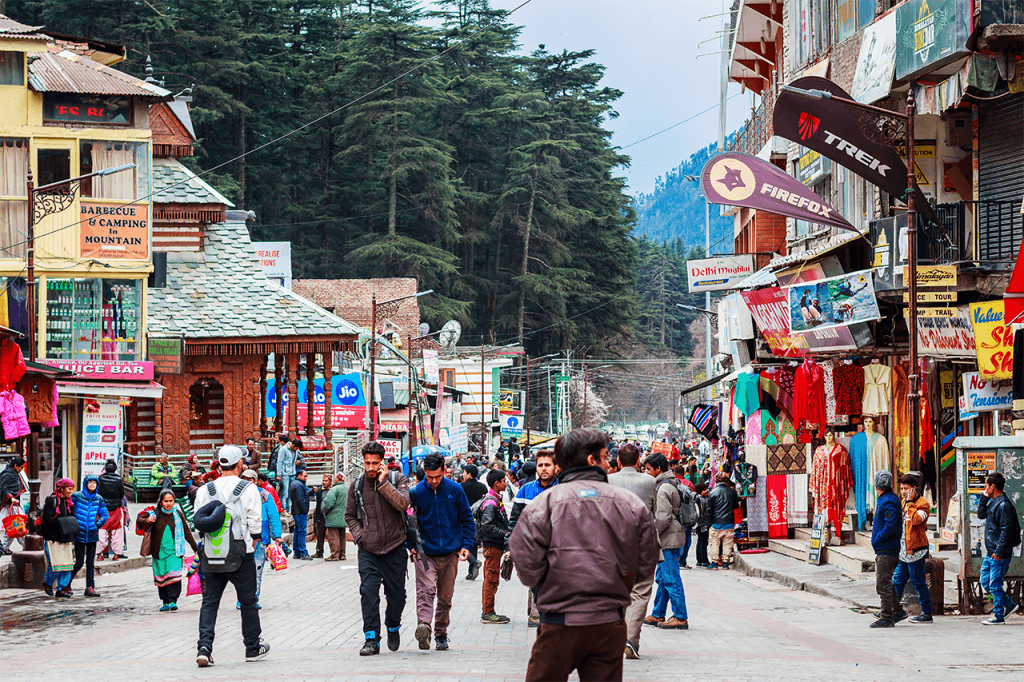
The best way to see the hues typical of a mountain state is in this, which is also Manali’s beating heart. The bazaar, one of the most well-known tourist attractions in Manali, is home to hundreds of stores selling regional handicrafts, trinkets, and delectable snacks like soups and dim sum. You must stop by the Tibetan shops to purchase colourful wool scarves, socks, stoles, Himalayan salts, oils, and other items.
Additionally, you can purchase pickles and juices made from regional Himalayan fruits and vegetables, as well as intricately carved items for your home. Visit the German bakeries in the area for mouthwatering homemade pastries and coffee. A trip to the bazaar is a great way to learn about the culture and way of life of the locals and to sample some of their traditional snacks.
Location: Dhungri Village
Best time: This is an all year round place
Entry Fee: No entry fee.
Dhakpo Shedrupling Monastery
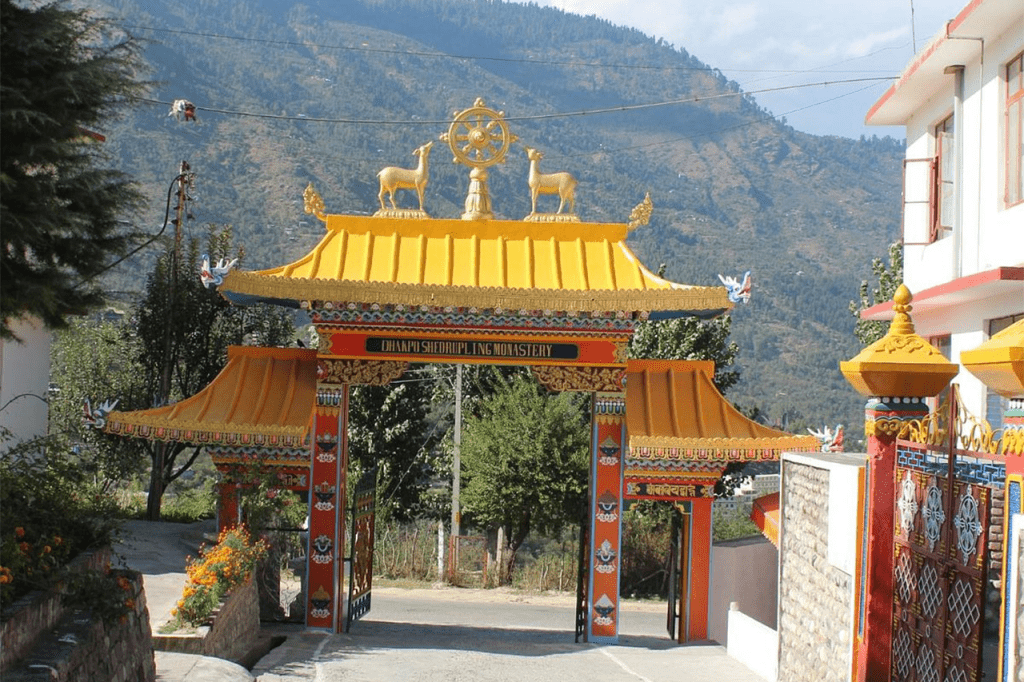
This monastery, which HH the Dalai Lama dedicated in 2005, is a must-see for anyone who wants to experience the serenity of Buddhist tradition. Spend some time admiring the monastery’s striking plum and yellow paintings, sculptures, and intricate wood carvings on the ceilings and pillars. Buddhist hymns can be heard echoing from the prayer area, which has snow-covered mountains in the background. The monks are amiable and eager to converse with visitors. Among all the tourist destinations in Manali, it is unquestionably a must-see.
Location: Kullu-Naggar-Manali Road, Kais
Best time: The monastery can be visited throughout the year.
Entry Fee: There is no entry fee, but a donation can be made
Deo Tibba
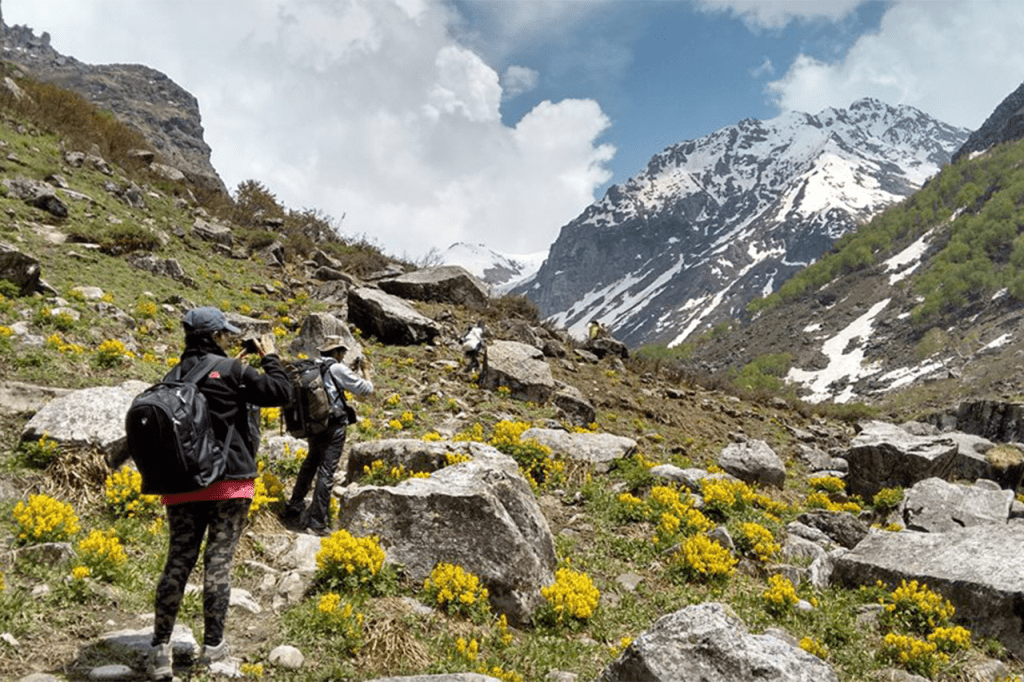
The Deo Tibba trek, regarded as one of the most stunning in the area, is well-known for the views it provides. You will stroll alongside small streams and fragrant pine forests while taking in stunning views of Chotta Chandratal Lake and peaks like Deo Tibba and Nobru Peak. Along the way, you will also pass by the homes of the nearby Gaddi tribe. You will ascend as high as 13,775 feet at most during this 5-day trek.
Distance from Manali: 19 km
Difficulty: Moderate level trek
Best Time to visit: May-June, and September-October
Beas Kund Trek
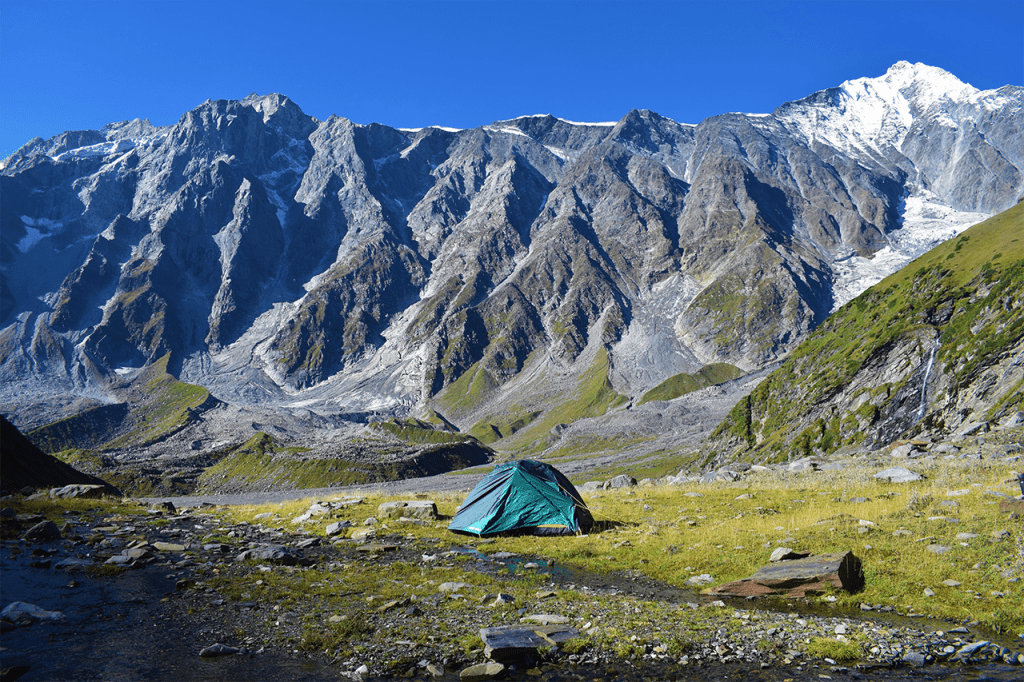
One of the most significant locations in the area is Beas Kund, which is located in the Dhauladhar Range. This Beas River’s source is revered, and the journey there is incredibly beautiful. You will travel along the Beas River’s banks for three days as you pass through the lovely Solang Valley and the quaint mountain village of Dhundi.
You’ll see glacial moraines and travel through Bakarthach, a high-altitude wildflower meadow populated by flocks of sheep and members of the Gaddi tribe. The trek’s highest point is Beas Kund, which is situated at a height of roughly 11,600 feet. From here, take in stunning views of Hanuman Tibba Peak and Friendship Peak.
Distance from Manali: 21 Km
Difficulty: moderate-level trek
Best time to visit: June to mid-October.
Location: Near Hotel, Sun Park, Naggar Rd, Manali, Himachal Pradesh 175101
Best time: September to November.
Entry Fee: 15 INR Per Person.
Bijli Mahadev Trek
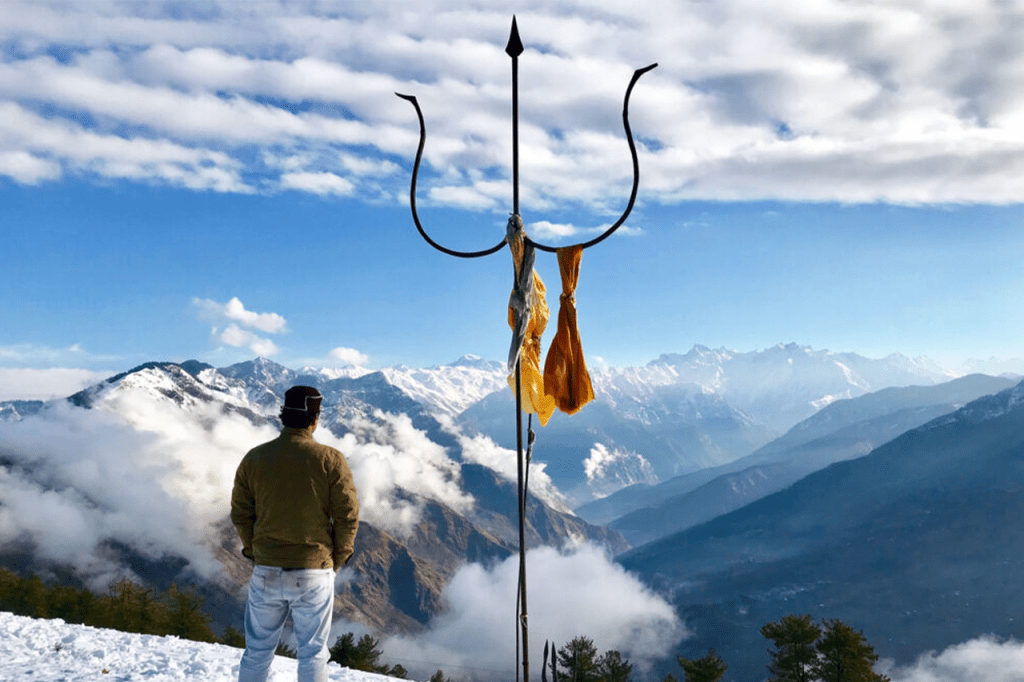
This beautiful hike will take you to the revered historic Bijli Mahadev Temple, making it the ideal Manali tour. According to legend, the temple statue is occasionally struck by lightning and broken, but it is then repaired by the priests using butter! You must travel through the picturesque Kullu valleys and the Pir Panjal range of mountains in order to reach the temple, which is 8,000 feet high.
The charming Chansari village, the Kais Wildlife Sanctuary, and the Matikochar Range will all be places you pass through. You will be astounded by the stunning views of the Parvati and Beas Rivers coming together. Throughout the winter, the temple is closed.
Distance from Manali: 62 Km
Best time to visit : April-October
Patalsu Peak
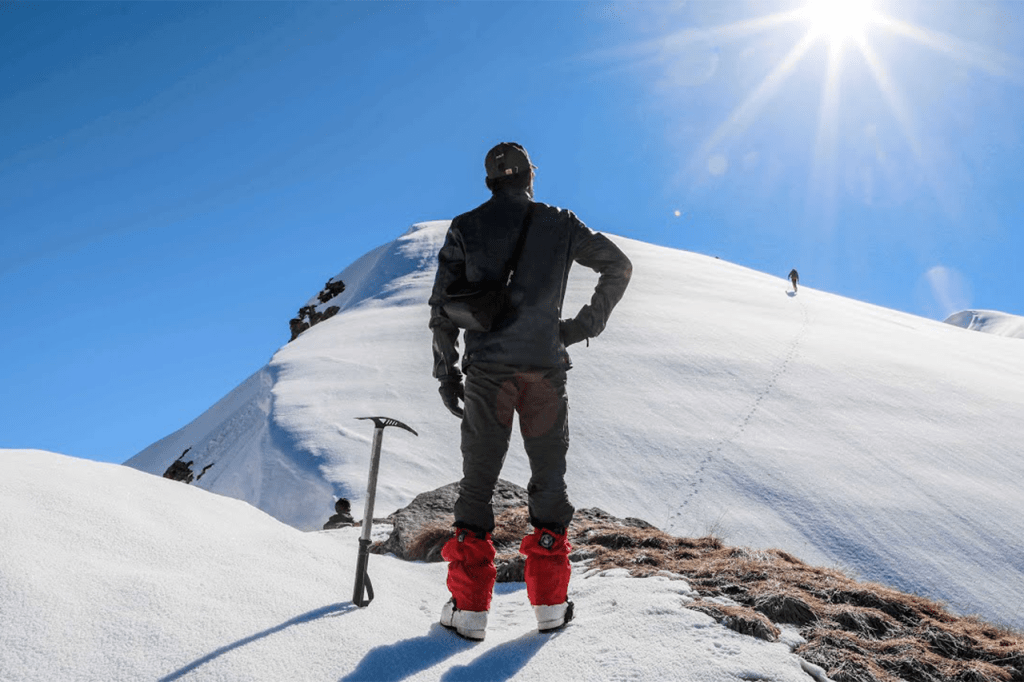
The Patalsu Peak trek is an absolute visual treat and a great trek for beginners who want to experience climbing a peak. You will pass through dense oak and deodar forests on this two-day hike, which are home to a variety of colourful birds, including pheasants and monal.
You will have sweeping views of the Kullu Valley, Hanuman Tibba, and Friendship Peak the entire way. You will be astounded by the views of Lahaul, Spiti, and Beas Kund Peak from the peak’s summit. Your highest point during this trek will be somewhere around 13,800 feet.
Distance from Manali: 36 km
Best time to visit: May-June, and September-Mid October
Prashar Lake Trek
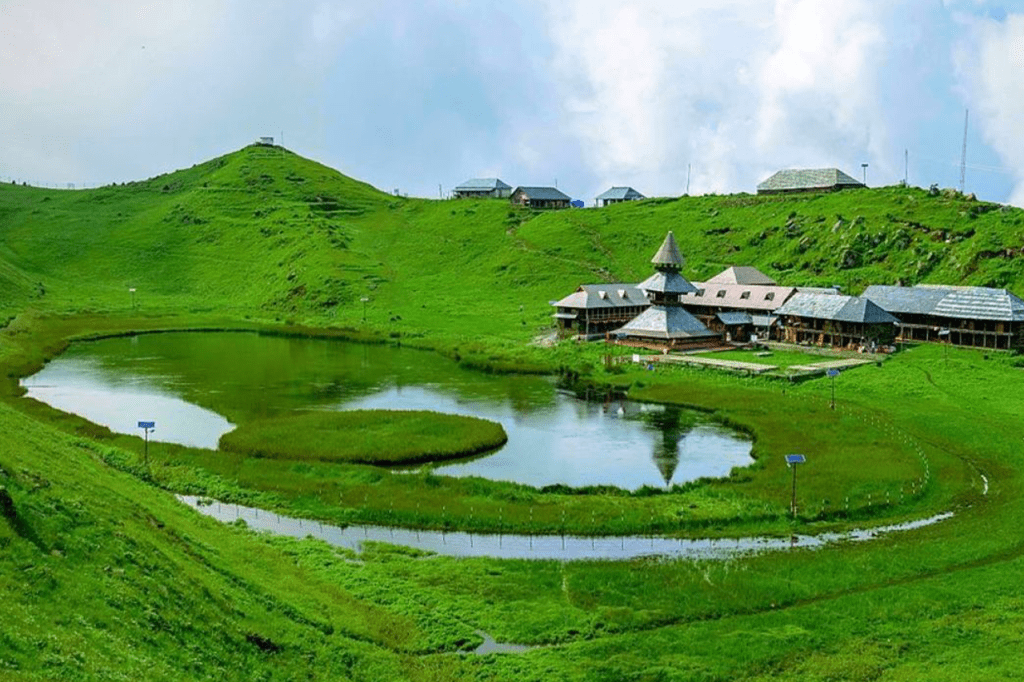
The Dhauladhar range in the Manali area is known for its hidden gem, Parashar Lake. It is accessible via a brief but lovely two-day trek that rewards one with breathtaking views of this unusual place. traverse rocky, steep trails lined with pine and oak trees. While walking alongside views of the Kinnaur and Shimla mountain ranges, look out for the deep red-hued rhododendron bushes along the way.
When you arrive at the oval-shaped lake with blue water, you’ll be fascinated not only by the breathtaking scenery, but also by the intriguing myths that surround it. On the shores of the lake, there is a 3,000-year-old temple with a floating island. It is claimed that no one has been able to determine the lake’s depth. The highest altitude you will reach on this trek is around 9,000 ft.
Distance from Manali: 103 km
Best time to visit: June-October, and January-February
Bara Bhangal Trek
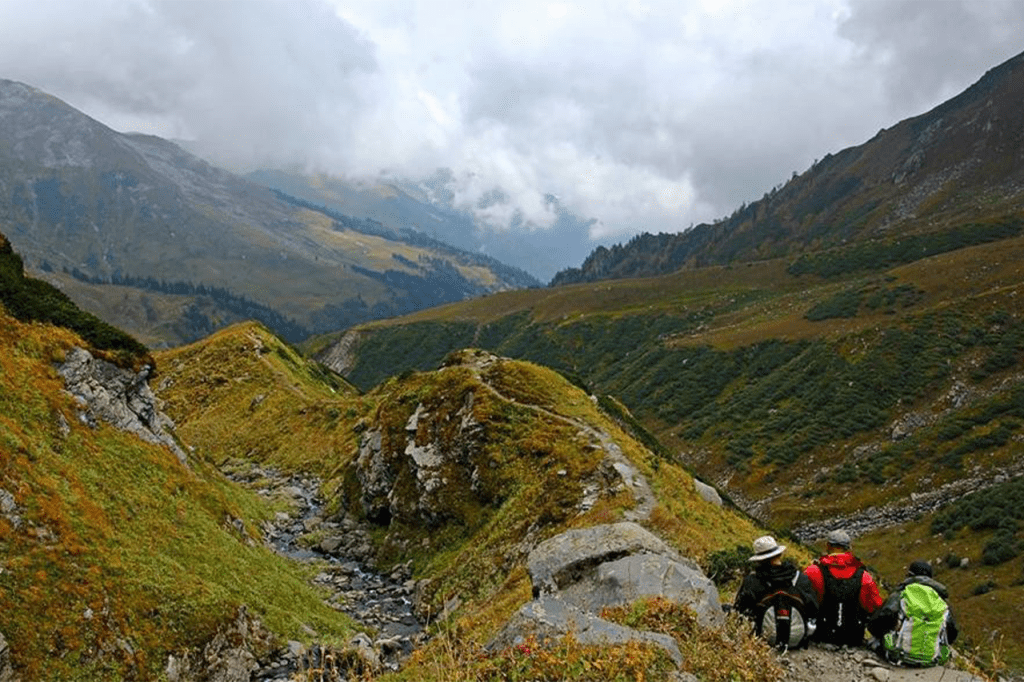
This strenuous trek, ideal for seasoned hikers, is a fantastic way to discover the Himalayas’ natural beauty on your Manali tour. During this trek, you will gain altitude frequently and daily as you travel through passes to cross tall peaks.
While there are frequent gradient changes, trekkers are rewarded with incredible experiences every day. You will see the Ravi River, meadows, oak forests, and the Kalihani Glacier up close. With this 10-day high-altitude trek, you can observe nature from a height of 16,000 feet.
Distance from Manali: 36.5 km
Best times to visit: April-June, and October-November.
Kasol
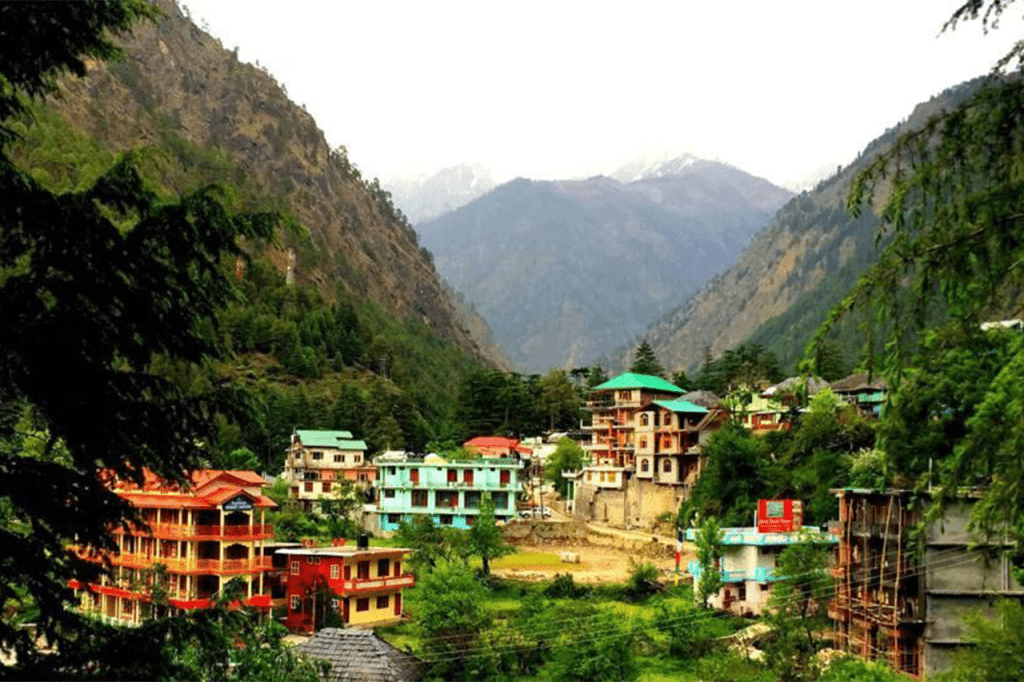
Popular tourist destinations in Kasol include the Chalal Trek Trail, Manikaran, Malana Village, and Tosh. Every year, thousands of backpackers visit this tranquil location by the Parvati River to experience its simplicity and peace. You can learn everything there is to know about visiting Kasol from this travel guide. The Chalal Trek Trail in Kasol is a well-liked hiking route by the Parvati River to unwind and take in the peace of the woods. The majority of Kasol is a market where all necessary tourist amenities are sold, including travel tickets, car rentals, meals, and lodging. The nearby Parvati Valley villages of Malana, Rasol, Tosh, Chalal, and Kheerganga all have Kasol as their home base. A person can also walk the entire length of Kasol in a matter of hours due to its small size.
Old Kasol and New Kasol are separated from each other by a bridge that spans the Parvati River. Your trip to Kasol will be more enjoyable if you have a tour guide with you. Take a holy bath in Gurudwara Manikaran Sahib’s hot springs, which are said to be able to cure a variety of skin and breathing issues. You should definitely check out the cafes in the Kasol market if you’re wondering whether tourism in Kasol is just a beautiful village with holy places.
Kullu
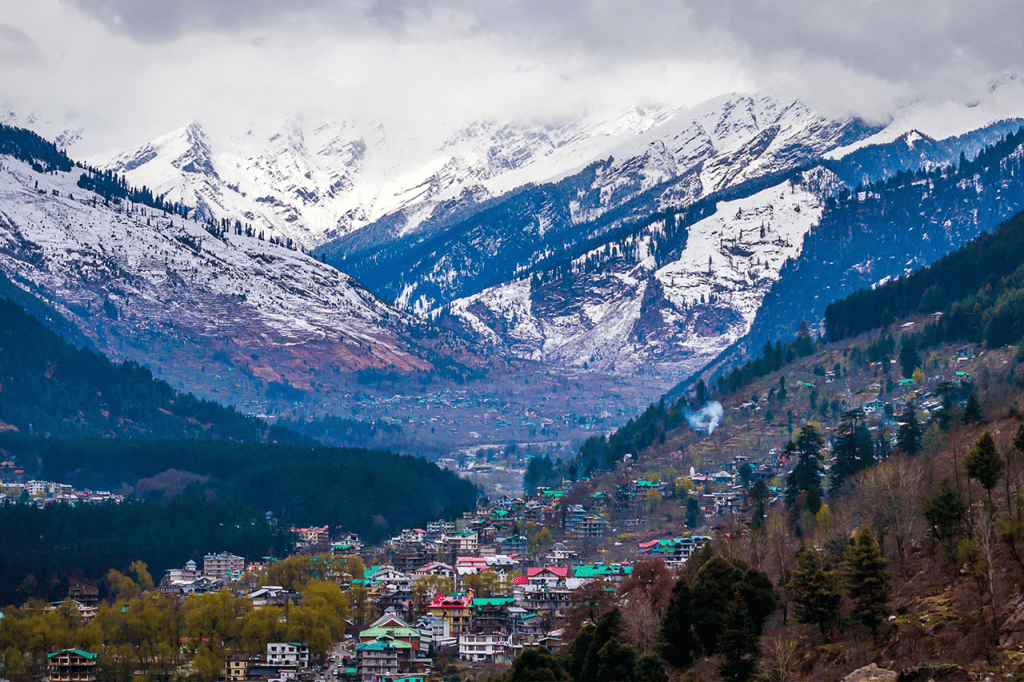
Kullu, also known as the “Valley of Gods,” is a collection of stunning valleys in the Himachal Pradesh region. Located at a height of 1230 metres, Kullu is sandwiched between the magnificent Himalayas and the Beas River. Couples on honeymoon frequently visit Kullu and Manali, two popular hill stations. Rivers, apple orchards, towering Deodar jungles, and picturesque views of the mountains covered in snow have all drawn several feature film producers. Kullu is a popular destination for extreme sports. Among the activities available in Kullu are trekking, river rafting, mountaineering, paragliding, and hiking over Himalayan glaciers. Another activity that both locals and visitors take great pleasure in is fishing.
Trekking tours of the Beas Kund region, Hanuman Tibba, and Deo Tibba are available for novice mountaineers. Private companies arrange 12-day expeditions on the majority of the trekking trails, which are found in the Spiti, Lahaul, Zanskar, and Ladakh valleys located beyond the Rohtang Pass. Among the ‘touristy’ locations worth visiting are the hot springs of Kheerganga, Manikaran, a pilgrimage, and the Great Himalayan National Park.
Chandratal Baralacha Trek in Himachal Pradesh
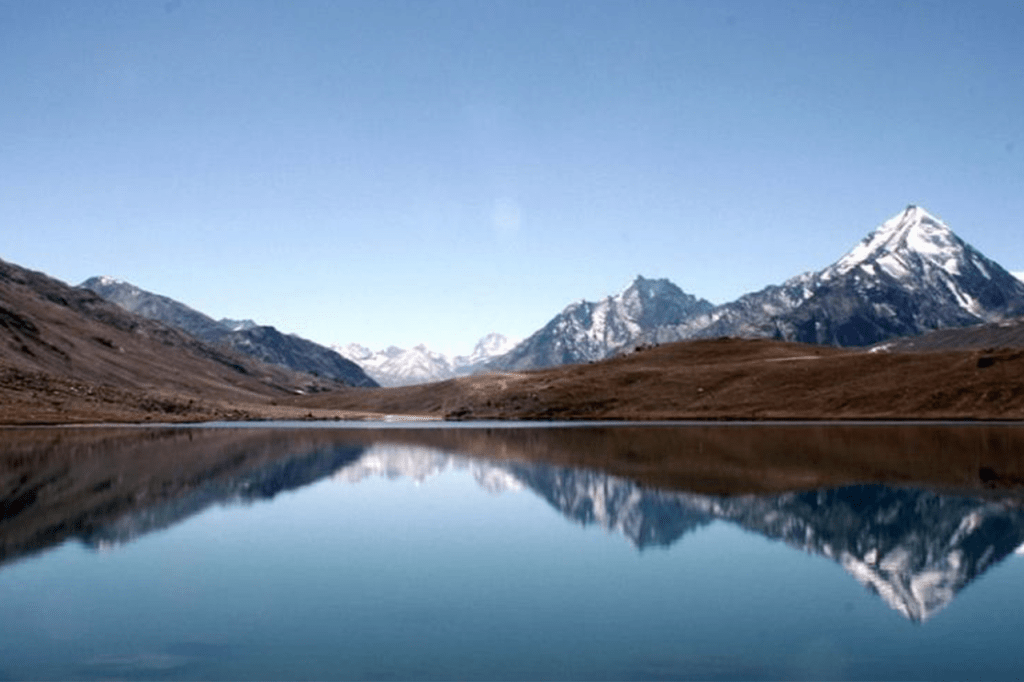
- Take part in this 8-day trekking trip in Chandratal Baralacha to experience the captivating beauty of the area.
- After arriving in Manali early in the morning, begin part of your Manali tour before being taken to your hotel.
- Visit the mall road and the Hadimba Devi Temple.
- After a delectable breakfast, travel to Batal via the 3980-meter Rohtang pass.
- Continue your hike to Chandratal (4250 m/13940 ft), where you can stop for a picnic lunch and take in the breathtaking view of the Chandra River flowing into the main Kunzum range and a lower ridge.
- Enjoy yourself near the lake while taking in the sights of the area. Observe the trek to reach Tokpo Yogma and the splendour of the mountain peaks.
- Continue hiking through the streams for another 10 kilometres to the Baralacha Pass (4950 m) once you reach Tokpo Yogma.
- As you trek and arrive at Baralacha Pass, explore the three rivers Chandra, Bhaga, and Yunam.
- Take a jeep for the overnight journey to Manali.
- Finish your Manali tour by leaving in the evening for Delhi.
Shimla
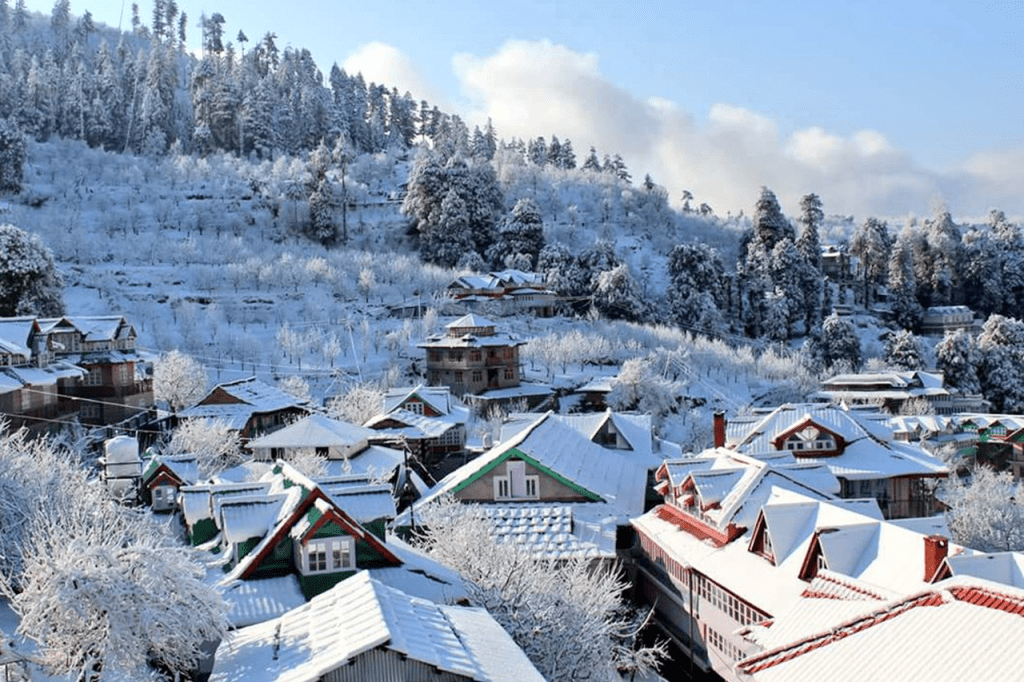
Shimla is one of India’s most well-liked hill resorts, and for good reason—it has a special charm. Shimla, which is 342 kilometres from Delhi, the nation’s capital, is a great weekend getaway destination from Chandigarh and Delhi because there are so many places to see there. Shimla, the state capital of Himachal Pradesh, easily justifies its status as the capital city of a stunning region well-known for outdoor activities and natural wonders thanks to all that it has to offer and all that it possesses. Shimla is a breath of fresh air in and of itself, thanks to its beautiful, dense forests of pine, oak, and deodar.
This stunning hill town’s picturesqueness makes it a suitable destination for photographers seeking the ideal shot and nature lovers seeking to experience nature in its purest form. Jakhoo Temple, Tara Devi Temple, Mansa Devi Temple, etc. are a few of Shimla’s most revered temples. Himalayan Bird Park is a wildlife lover’s paradise, showcasing exotic and native bird species. Shimla Reserve Forest Sanctuary is a great option for nature lovers and photographers. From the Ridge, splendid views of the city can be enjoyed and captured with your camera after sunset. Here are some magnificent structures with neo-Gothic architecture that are fascinating. There are many interesting things to do in Shimla that will never leave you feeling bored. Be it a lazy walk on the Mall Road or shopping for low-cost wooden articles and woollen clothes from Lakkar Bazar, everything has a “feel good” factor about it here. Shimla used to be more well-liked among vacationers taking their families as a summer destination, but now that adventure activities are becoming more well-known, adventure seekers are beginning to take notice.
Camping, trekking, ice skating, paragliding, river rafting, and heli skiing are some of the most well-liked activities in Shimla. There are some pleasant, short hikes that will lead you through forests of oak and pine trees and to picturesque locations. If you’re up for something different, you can also try out the fun of ice skating or mountain biking here. Shimla can be visited at any time of the year and is beautiful in all four seasons. The best time to visit is between March and June, when the climate is pleasant. It’s the perfect place to go on a cold, lazy vacation. If you’re lucky, you might see snowfall here from December through February.
Pandoh Dam
It is a part of the hydroelectric energy production project in India. The Himalayan mountains’ lush green hills and tall pine trees encircle the dam. You can still take in the scenery and greenery around the dam, despite the fact that swimming and other water activities are prohibited in the catchment areas.
The road leads directly up to the dam, making it simple to travel there by car. However, access to the dam requires prior authorization from the authorities. The area is great for day trips, picnics, and weekend hikes. A small island in the middle of the lake is also a great place to unwind while taking in the cool water’s view. The dam is especially ideal for those shutterbug photo enthusiasts who want to see nature in all its splendor. The water reservoir, which is blue and green, makes for some beautiful photographs.
Distance from Manali: 88 km
Best time to visit: April to October.
Malana
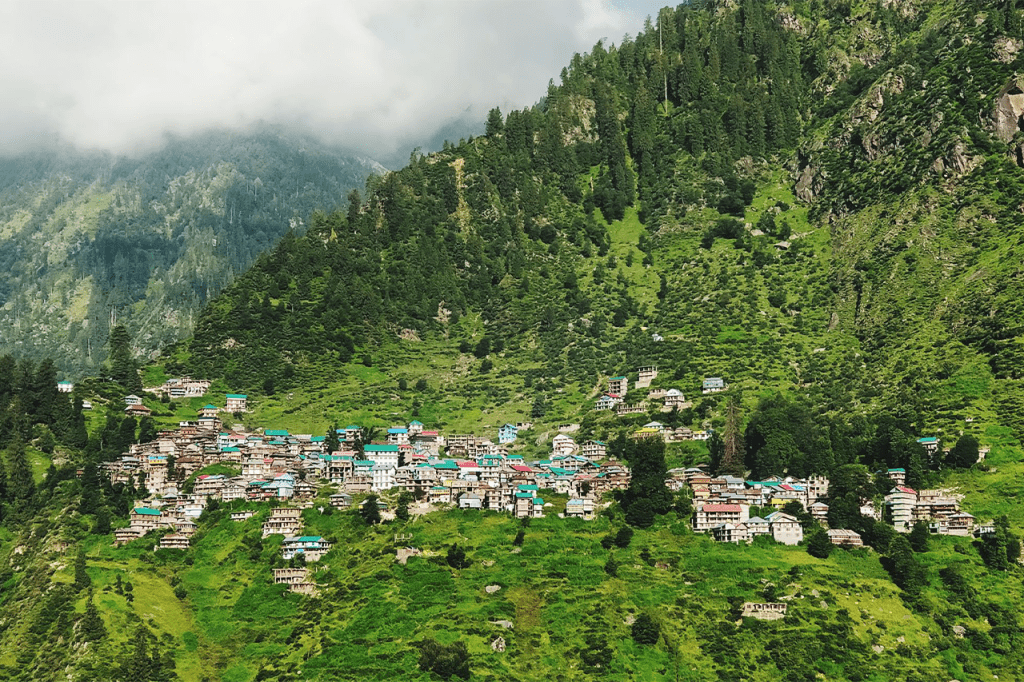
Malana, a historic village hidden away in the Himalayan mountains, is well known for being the ideal hipster vacation spot. The area is surrounded by beautiful valleys and lush, green trees, making it ideal for people who appreciate nature in all of its purest forms. The village is surrounded on two sides by the valleys of Parvati and Kullu, with the peaks of Cahndrakhani and Deotibba casting a shadow over this little-known Indian paradise. Malana is renowned for its distinct lifestyle and social structure, which the locals primarily adhere to, in addition to its natural beauty. Their clothing choices, the foods they consume, the holidays they observe, how those holidays are observed, and other behaviours all reflect the vibrant culture and tradition that are quite particular to the location.
The elevation of this idyllic vacation spot is 2,652 metres, or about 8,701 feet, above sea level. This town is so rich in natural beauty that numerous documentaries highlighting Malana’s wonders have been made about it. Malana’s native tongue is called Kanashi. Aside from that, this lovely location has a long history that can be traced. According to local legend, the revered sage Jamlu Rishi lived in this area and is credited with establishing Malana’s laws, customs, and traditions, among other rules. Locals even assert that Malana, which also has a well-established parliamentary system, is a reflection of the world’s oldest democracies. Malana is thought to have enjoyed great respect in pre-Aryan times.
Manikaran
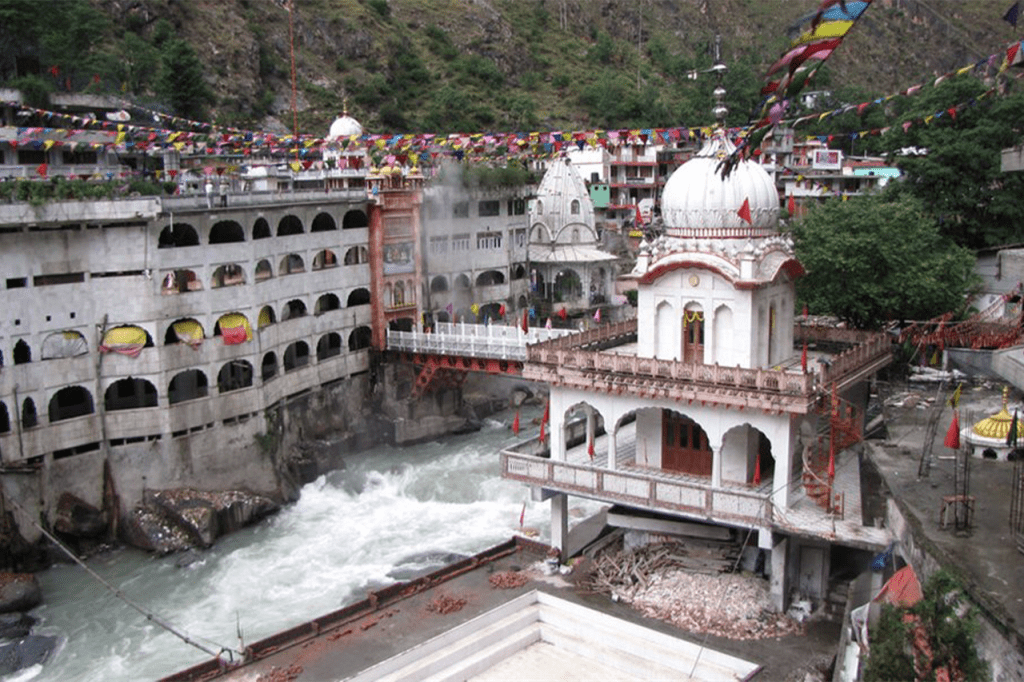
The Himachal Pradesh pilgrimage town of Manikaran is well-known for its hot springs, and it is located close to the popular tourist destinations of Kullu and Manali. Hindus and Sikhs both revere the town as sacred. Manikaran is situated in Himachal Pradesh’s Kullu district. Manali is about 85 km from Manikaran, and Kullu is about 45 km from Bhuntar. Manikaran is a popular destination for visitors to Kullu and Manali who come to pay respects at the gurudwaras and Hindu temples as well as to relax in the area’s hot springs. Manikaran is situated next to the Parvati River and is about 5,700 feet above mean sea level.
The river’s name derives from mythological tales linking Lord Shiva and Goddess Parvati to it. Hindu mythology holds that after the flood, the law-giver Manu restored human life in Manikaran. Manikaran is linked to Lord Shiva and Goddess Parvati in other legends. Shiva and Parvati once wandered through the valley and came across a place called Manikaran, where they decided to spend some time. Over the course of their stay, which lasted more than a millennium, a jewel from Goddess Parvati’s earring fell into the river. Goddess Parvati was angry, and all efforts to find the jewel were unsuccessful. Lord Shiva opened his third eye in a fit of rage. The gods asked Shesh Naag (the Serpent God) to control Lord Shiva’s wrath. When the Serpent God hissed, hot water began to ooze from the spot where the jewel had fallen, bringing out a number of jewels similar to the one that was sought after. Lord Shiva’s wrath was quenched by the sight of the jewels.
Guru Nanak Devji Gurudwara, likewise called Manikaran Guru Nanak was connected to gurudwaras (the founders of Sikhism). There is a langar (kitchen) in the gurudwara that serves free food. Other places of worship in Manikaran include temples honouring Lord Shiva and Ramchandra. One of Himachal’s busiest temples is this one. Manikaran’s Kulant Peeth is regarded as the most revered peeth. Natural hot springs are what make Manikaran so renowned. There are rumours that the hot springs have healing properties. Many pilgrims immerse themselves in the holy water to atone for their sins, while others seek the water’s healing properties.
Bhuntar
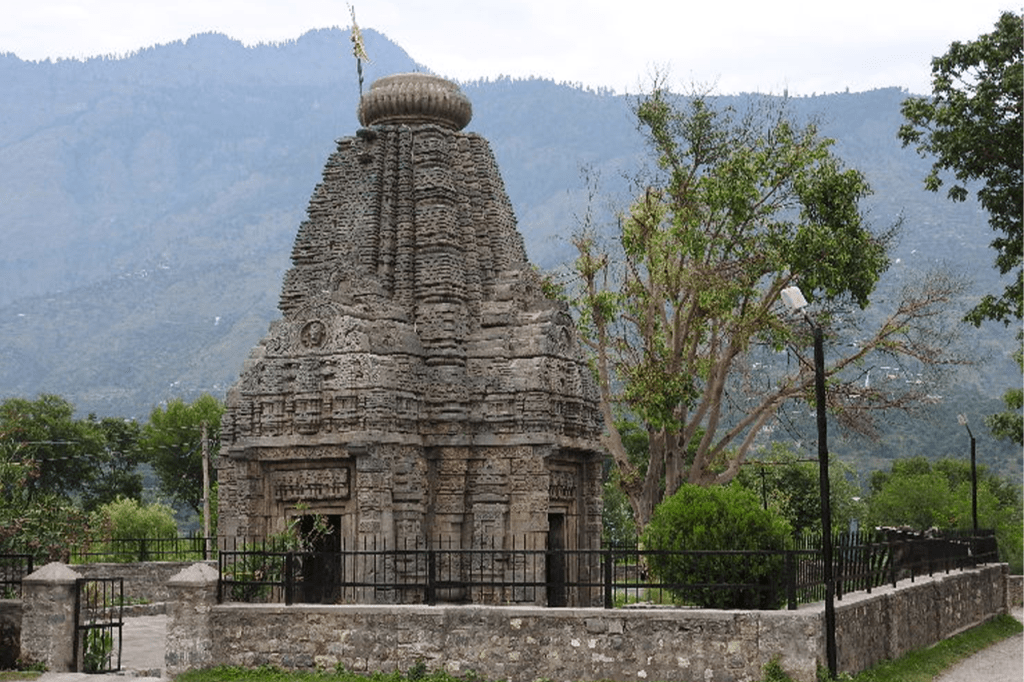
The Himachal Pradesh town of Bhuntar is located in the Kullu Valley. In Bhuntar, there aren’t many attractions or things to do. It is a peaceful weekend getaway for visitors who want to unwind in a small town. A few temples and historic locations can be visited. There is religious significance to this town. Bhuntar is about ten kilometres from Kullu Valley.For outdoor recreation and water sports, tourists travel to the Kullu Valley. There are locations in Kullu Valley with breath-taking scenery. At these locations, trekking and camping are common activities.
In Bhuntar, the weather is pleasant all year. Bhuntar is a great honeymoon destination because of its serene surroundings and calm climate. You can spend a weekend in Bhuntar if you want to escape the overwhelming crowds that can be found in the majority of Himachal Pradesh’s tourist destinations. Before travelling to Kullu, Manali, or other Himachal Pradesh tourist destinations, you should ideally spend one day in Bhuntar. There are a few locations in Bhuntar where you can go hiking and camping. In Bhuntar, there are a number of dhabas and small eateries that serve Indian and Mughlai food. In Bhuntar, you can go to the park and go on temple tours.
Parvati Valley
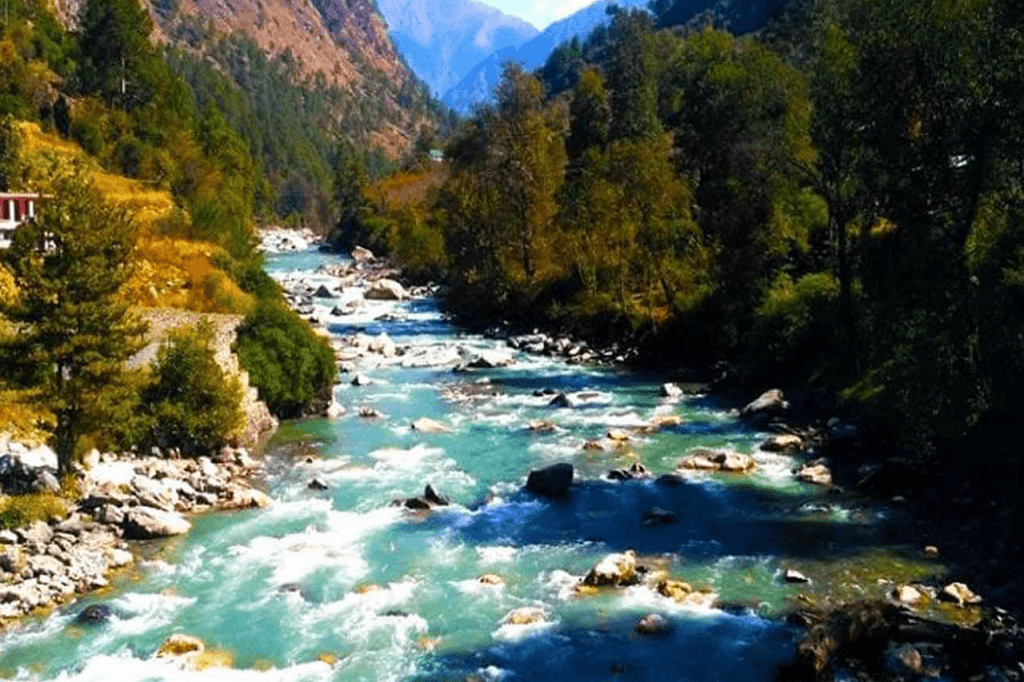
The breathtakingly beautiful Parvati Valley is home to some of Manali’s most picturesque towns and tourist destinations, including Malana, Manikaran, Rudranag Waterfall, and Kheerganga. It is thought that Lord Shiva lived there for about 3,000 years after the rivers Beas and Parvati met and formed the area. The stoic sadhus and the hippie tourists from Israel will blend together beautifully because of their shared love of the mountains.
Distance from Manali: 72 km.
Best time to visit: March until June and October to February.
Highlights: Visit Manikaran Sahib Gurudwara, one of Manali’s most serene attractions, and the well-known hot springs to surround yourself in divinity. Visit Malana and Tosh, two enigmatic villages, for quick nature hikes and to chow down on delectable Israeli and Italian cuisine. Enjoy some of Kasol’s best nighttime celebrations.
Gulaba
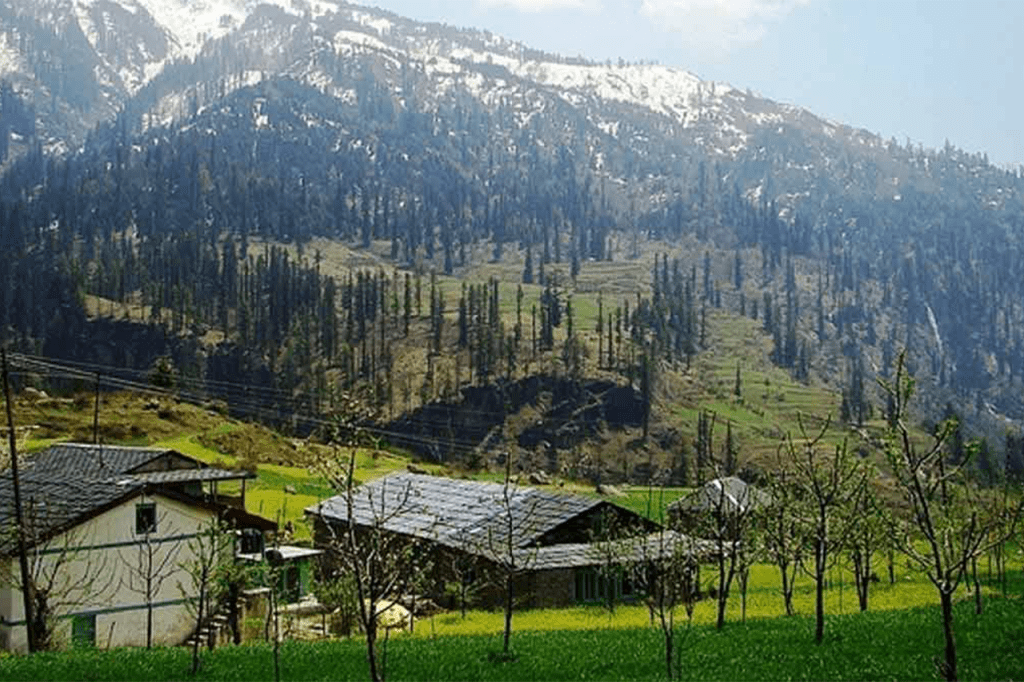
Raja Gulab Singh camped here while he was invading China, and this picturesque Himachal Pradesh village bears his name. The main draw of this location is the year-round presence of snow. Summertime, however, causes some of this village to turn green, which adds a different kind of charm. Gulaba is undoubtedly one of Himachal Pradesh’s most picturesque locations. This region receives a lot of snow, making it a sought-after location for people interested in snow adventure sports.
Gulaba, which is situated at a height of 4300 metres in the Pir Panjal Range, is unquestionably one of the most well-liked destinations in Manali tour. This is due to both the area’s stunning, idyllic scenery and the options for adventure enthusiasts like skydiving and paragliding.
Distance from Manali: 27 km
Best times to visit: April–June and October–January.
Kheerganga
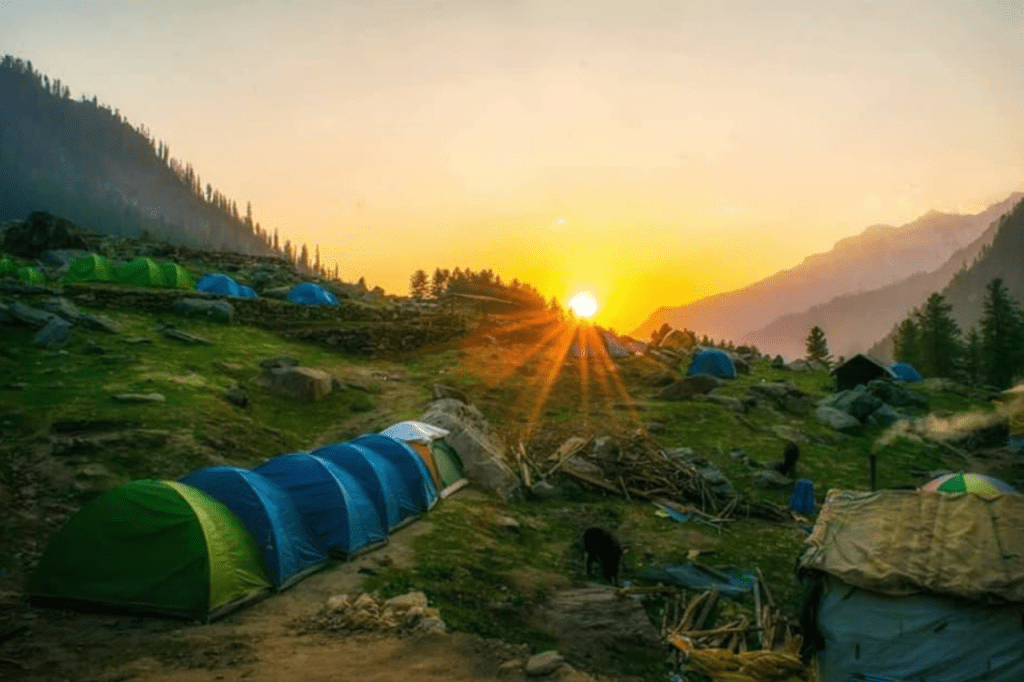
The milky-white waters of the Parvati river, which runs through this small alpine village, are the source of its name. The fact that it is a little off the beaten path gives it a secluded charm that makes it one of the most stunning tourist destinations on a Manali tour. It is renowned for its trails covered in pinecones and flaming rhododendron bushes.
Distance from Manali: 97 km
Best time to visit: May through June and September through October.
Highlights: The 13-kilometer Kheerganga hike is a must-try for adventure seekers. Its charming trails, which are interspersed with dense pine forests, numerous babbling brooks, and charming and colourful village houses, will astound you. You will be rewarded with a hot spring at the end of the hike, which is ideal for a soothing soak.
Naggar Village
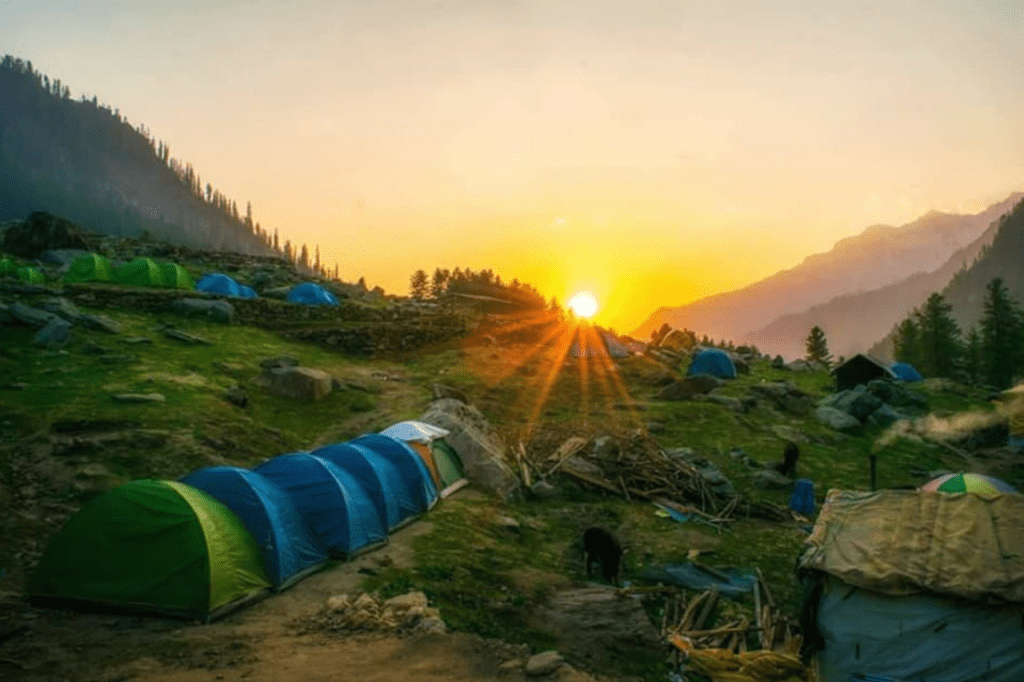
One of the few magical locations in Himachal Pradesh known for its kaleidoscopic beauty that has remained unspoiled and elusive is Naggar. While strolling along the winding paths lined with pine and deodar trees, you will encounter undulating views of snow-covered mountains and the roar of the Beas River everywhere you turn. Because of how stunning it is, some British officers even compared Naggar to Switzerland in their writings from the 18th century! Naggar is an amazing synthesis of architectural styles, whether it be the ancient Naggar castle, Hindu temples, Buddhist monasteries, or even the charming timber houses, thanks to its rich royal history and culture.
The environment is saturated with the trendy, artistic vibe that draws art enthusiasts from around the world. It has numerous museums and art galleries that are essential archives of regional traditions and collectibles and are a must-see. Naggar, which is known as the entryway to some of the best and most fascinating treks in Himachal Pradesh, is a haven for hikers and trekkers. You can explore trails like Beas Kund, Chandrakhani Pass, Bhrigu Lake, and Hampta Pass here, among many others. The friendly and welcoming locals never miss an opportunity to invite guests over for a cup of tea or some traditional Pahari food. Other types of cuisine, such as Tibetan, Italian, and Mediterranean, are also well-known at this location.
Jibhi
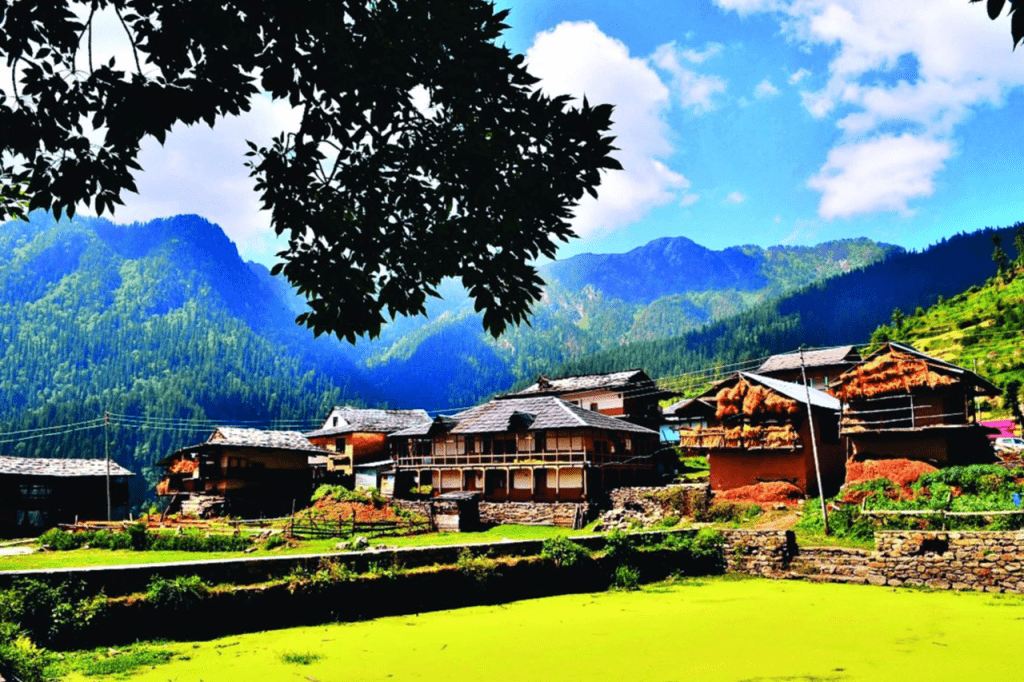
Jibhi, which is dotted with undiscovered waterfalls, cosy inns, dense pine forests, and everything we could possibly want. mainly because, due to its infrequent crowding, this ancient Himalayan village will give you all the space you need for yourself. This picturesque location, which is located along the Tirthan River, a tributary of the Beas River, boasts distinctive and inviting architecture. The majority of the homes in this area are made of stone and wood, and almost every home has an apple orchard in the backyard. You can find comfortable homestays run by locals because this place is still not overly commercialised. Jibhi provides you with many opportunities to enhance your vacation because it is close to the well-known Jalori Pass , Chehni Fort, Sirlosar Lake, and the Great Himalayan National Park. Adventurers can also go fishing in the Tirthan River in addition to these places. And if you prefer a more laid-back vacation, simply relax while soaking up the area’s picturesque views and the friendliness of the locals.
One of the best places to calm your senses is Jibhi Waterfall, which is discreetly tucked away inside a luxuriant green forest. Awe-inspiring sights include the waterfall’s gushing waters and the numerous tiny wooden bridges that cross them. You can also travel to Jalori Pass from here, which is about 12 kilometres away from the village. It’s the highest motorable pass in the area, and as you drive through it, you’ll be astounded by the picturesque surroundings and expansive views of neighbouring mountain ranges. It’s a sure bet to be thrilling and exciting for those who enjoy driving through the Himalayas. Then there is Chehni Kothi, a famous village known for its Great Tower temple, also called Chaini Kothi. It is said to be the largest structure in Western architecture and a prime example of Kathikuni tradition.
Tosh
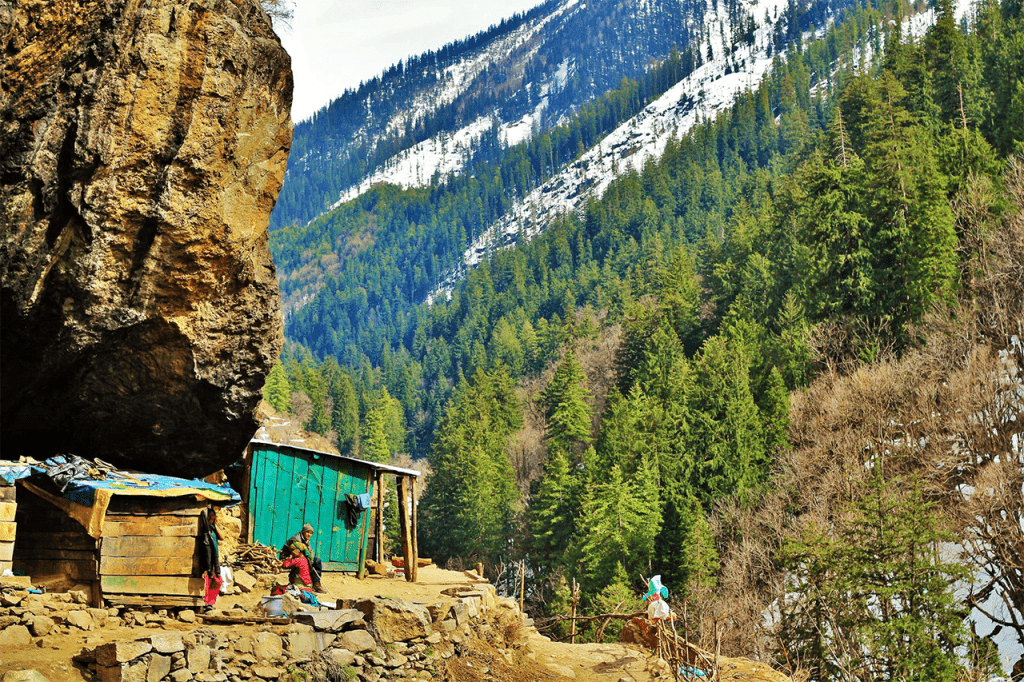
Tosh, a quaint, quiet little village, is much more than just a popular marijuana destination. It is one of those ideal tourist destinations in Manali that guarantees to provide relief from the oppressive heat of the plains. Every nook and cranny of Tosh offers stunning views of lofty peaks covered in snow.
Distance from Manali: 95 km
Best time to visit : March to June to experience pleasant weather. Visit between October and February if you are looking for snow activities.
Highlights: As the ancient Tosh temple is largely locked up and tourists are rarely allowed inside, make sure to admire its beauty from the outside. Wander through the village’s winding lanes and view the waterfall. The locals are approachable and eager to engage in conversation. At the homestays, sample the delicious sizzlers and desserts.
Tirthan Valley
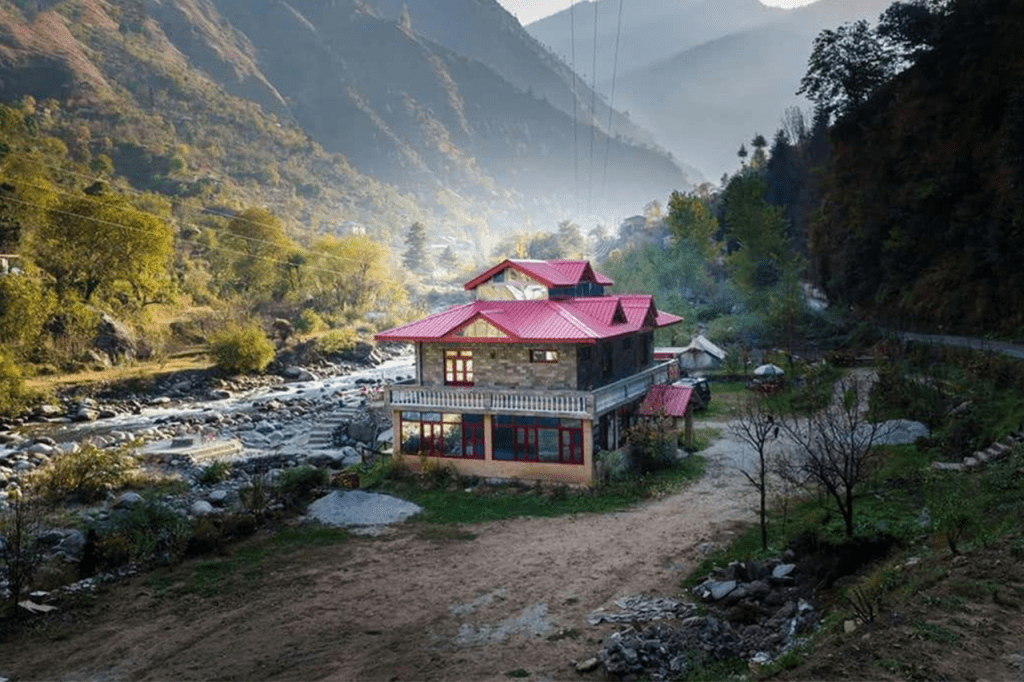
Tirthan Valley in the Kullu district of Himachal Pradesh, which is regarded as one of the state’s hidden gems, is a location that is difficult to put into words. Its magnificent natural vistas are ideal for visitors who want to spend time in the unspoiled mountain wilderness and are named after the glacial Tirthan River, which originates in the Great Himalayan National Park.
Distance from Manali: 93 km
Best time to visit: October to May.
Sethan
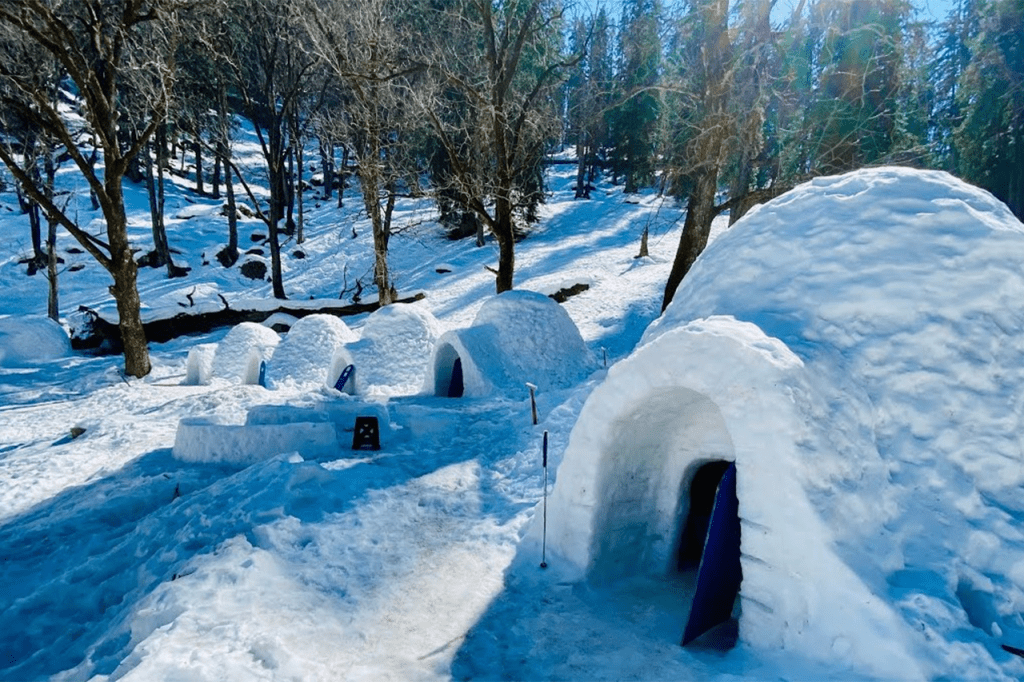
One of the few Buddhist communities in Himachal Pradesh, Sethan is made up primarily of immigrants from Tibet. In every sense, it is a remote, hidden paradise. It is one of Manali’s most captivating tourist destinations and only has 20 houses. Due to this, the village is ideal for a relaxing mountain vacation.
Distance from Manali: 16 km
Best time to visit: October to May.
Highlights: For adventure seekers who want to try skiing, snowboarding, and winter treks, it is the perfect location in the winter. It is renowned for its night camping and summer hikes. Visit Pandu Ropa, which is among the best places to see in Manali and is thought to have been the Pandavas’ place of meditation.
Which Manali tourist attractions are essential for couples?
1. Old Manali: Entering Old Manali’s rural charm is the best way to spend some cosy moments with your partner. You can stroll hand in hand with your partner because of the village’s laid-back atmosphere.
2. Van Vihar National Park: This park offers a glimpse of nature in the middle of a busy city. You have the ideal chance to enjoy the outdoors and share some private time with your partner.
3. Gadhan Thekchhokling Gompa Monastery: This temple established in honour of Lord Buddha is very well-liked by couples. You and your partner can enjoy the monastery’s stunning architecture and the tranquil atmosphere it exudes.
4. Jogini Waterfall: You and your partner are sure to be mesmerised by the waterfall’s picturesque view. You can hike there as well and create some priceless memories.
What are the top destinations in Manali tour to visit in June?
1. Hidimba Devi Temple: The lush vegetation that surrounds this historic temple in June is simply magical. With its stunning architecture and serene atmosphere, the temple honours the goddess Hidimba, who was also Bheem’s wife.
2. Manali Sanctuary: You must visit the Manali Sanctuary in June to see the diverse flora and fauna. It has fascinating wildlife, including the flying fox, the Himalayan black bear, the barking deer, and others, in addition to the lush vegetation.
3. Manu Temple: In June, you can experience the breathtaking beauty of the surrounding landscape by visiting this temple. This Hindu temple, which is dedicated to Sage Manu, will undoubtedly calm your soul due to the many folktales that surround this sacred location.
4. Vashisht Temple: The best time to visit this temple in Manali is in June because of the pleasant weather. This historic temple, which bears the name of Ram’s kulguru, is home to a therapeutic hot spring.
Which adventure sports are the best to try in Manali?
Manali is a getaway spot for people looking for exhilarating sports.
1.Rafting on the Beas River
2. Camping, rafting, and adventure activities
3. Paragliding in Kullu Manali
4. Skiing in Manali and Solang Nallah
5. Downhill cycling in Manali
6. Rafting Adventure Camp in Manali
What can one do at night in Manali?
The nights and evenings in Manali offer their own surprises as the moonlight envelops the mountains and valleys. The following are some of the top activities to do at night in Manali:
Night camping: Under the brilliant skies sparkling with a million stars while you are surrounded by the crisp mountain breeze, night camping is the most memorable and amazing way to spend your nights. On the banks of the Beas River and in the Solang Valley are some of the best locations for camping.
Enjoy the hustle and bustle of Mall Road, which is always buzzing with tourist conversation and a great place to get ice cream or a late-night coffee and dessert.
Listen to music while you drink: Manali is home to a number of quaint bars and pubs that are open until the wee hours of the morning and offer drinks, small bites, and live music by a fireplace. Drifter’s Inn, Johnson’s Bar & Restaurant, and Lazy Dog Lounge are a few of the best spots.
Visit Old Manali, a charming place where modern café culture coexists with the relaxed and rural Pahari village life. It’s a wonderful place to stroll along the winding, stony paths while admiring the quaint homes that are lit up at night. Old Manali is filled with the roaring and crashing sounds of the Beas River everywhere you go.
Eat: To cap off your day, indulge in one of the many cuisines that the area’s restaurants have to offer. Delicious options include wood-fired pizza, pasta, momos, trout dishes, fruit wines, Lebanese platters, warm ciders, and tandoori snacks at places like Chopsticks, Casa Bella Vista, and German bakeries. Enjoy the decadent desserts, including cakes, waffles, and pancakes with fruit and chocolate filling, along with steaming cups of flavorful coffee.
Which dish is the speciality of Manali?
Due to the use of spices like cardamom, cinnamon, turmeric, coriander, and others, Himachali cuisine is renowned for its rustic yet delicate flavours and aromas. Rice, meat, and chickpeas cooked in yoghurt, ghee, and buttermilk are staple foods among the locals. In Manali, some of the top dishes to try include:
– Mittha: Made from rice and raisins and then topped with dry fruits, mittha is a Manali specialty. This is a dish that can be found in any restaurant in Manali and is a must-try if you are there.
– Dham: Rice cooked in curd and rajma and moong daal are combined to make this traditional one-pot dish. When generously topped with melted ghee, tamarind, jaggery, and sweet-and-sour sauce, it tastes even better.
– Siddu: A delicious and airy steamed ball of wheat flour, siddu is one of the most adored regional dishes. It is the ideal companion for meat or daal.
– Chana Madra: This delectable side dish is made from Kabuli chana, or chickpeas, which are cooked in a yoghurt-and-chickpea-flour gravy that is flavorful with the flavours of garlic, cardamom, and onions.
– Kullu Trout: One of the most popular foods in Manali is fish. To make Kullu Trout, fresh fish is shallow-fried in mustard oil with seasonings like ginger and chillies. With steamed rice, it tastes best.
What time of year is ideal for a trip to Manali?
Manali is best visited in January, when it is snowing. You can choose to travel there between October and February if you’re an adventurer. The location hosts a variety of fun events, delicious meals at the restaurants, and other things during this time.
